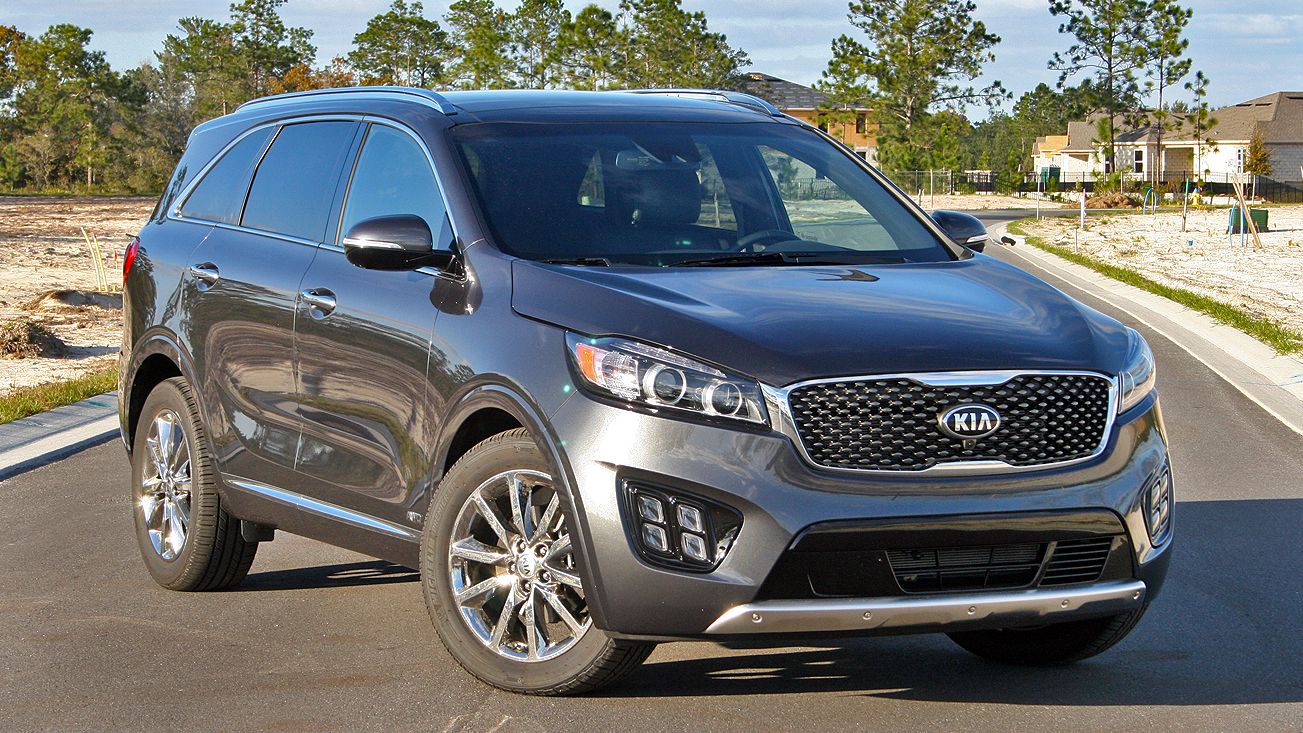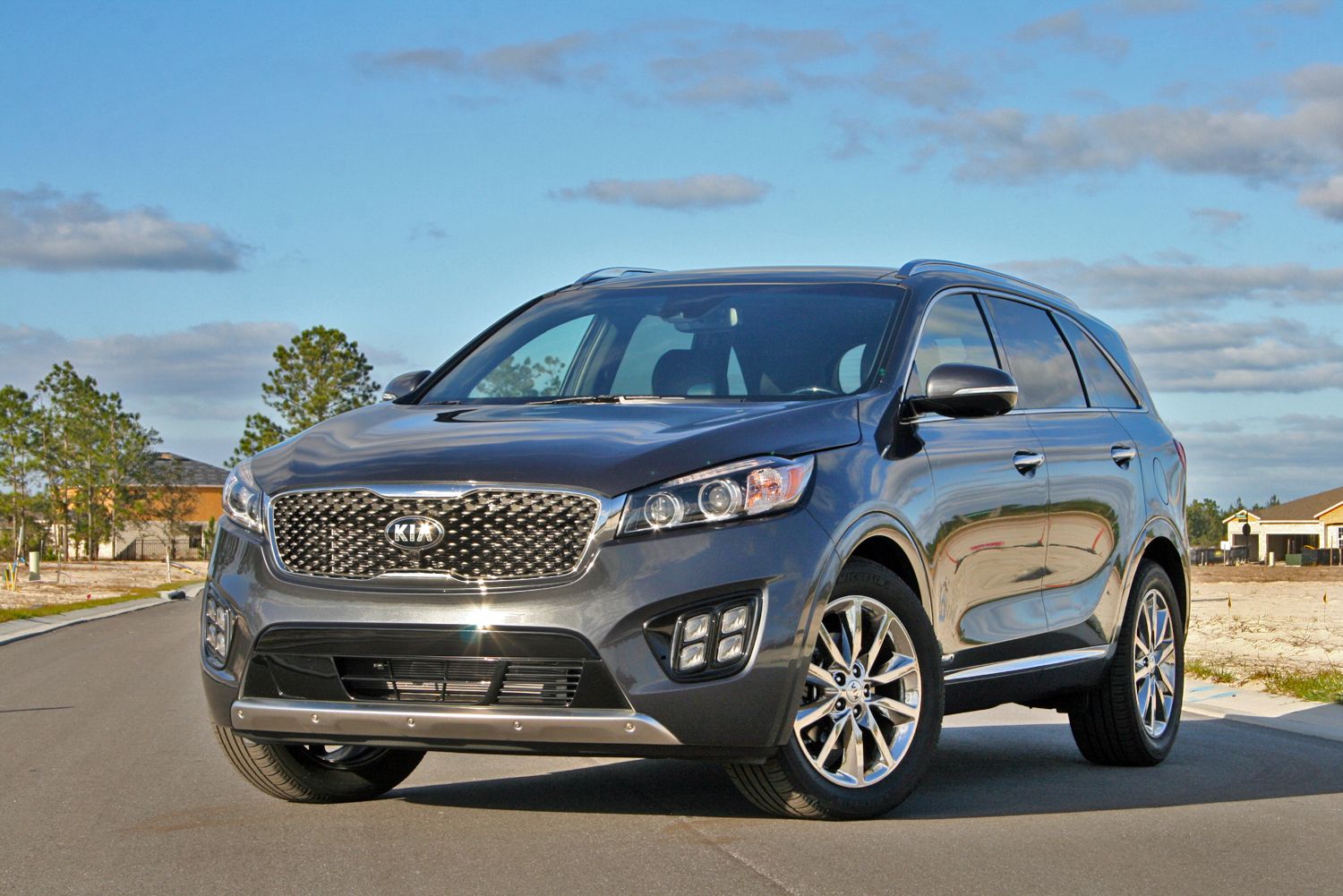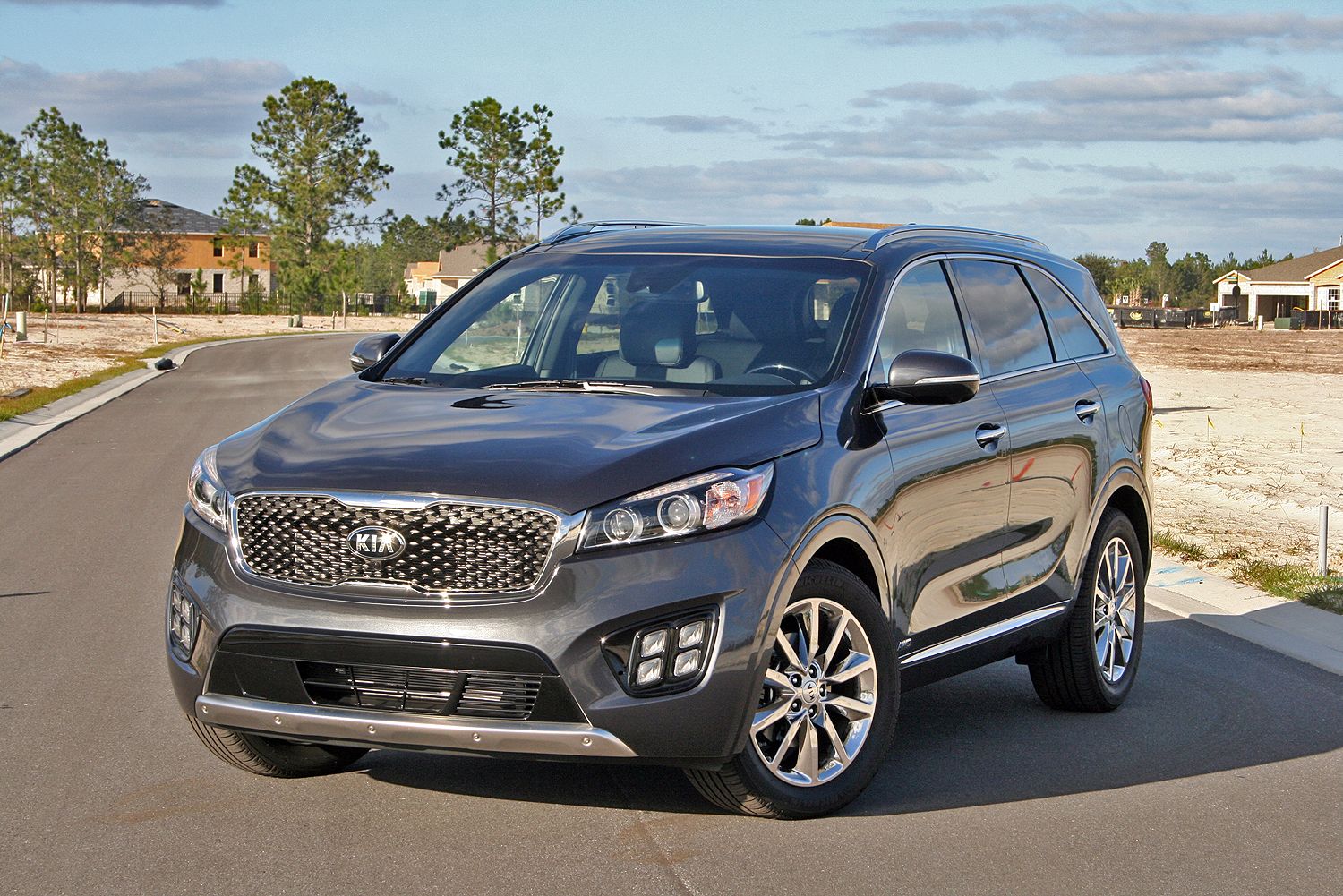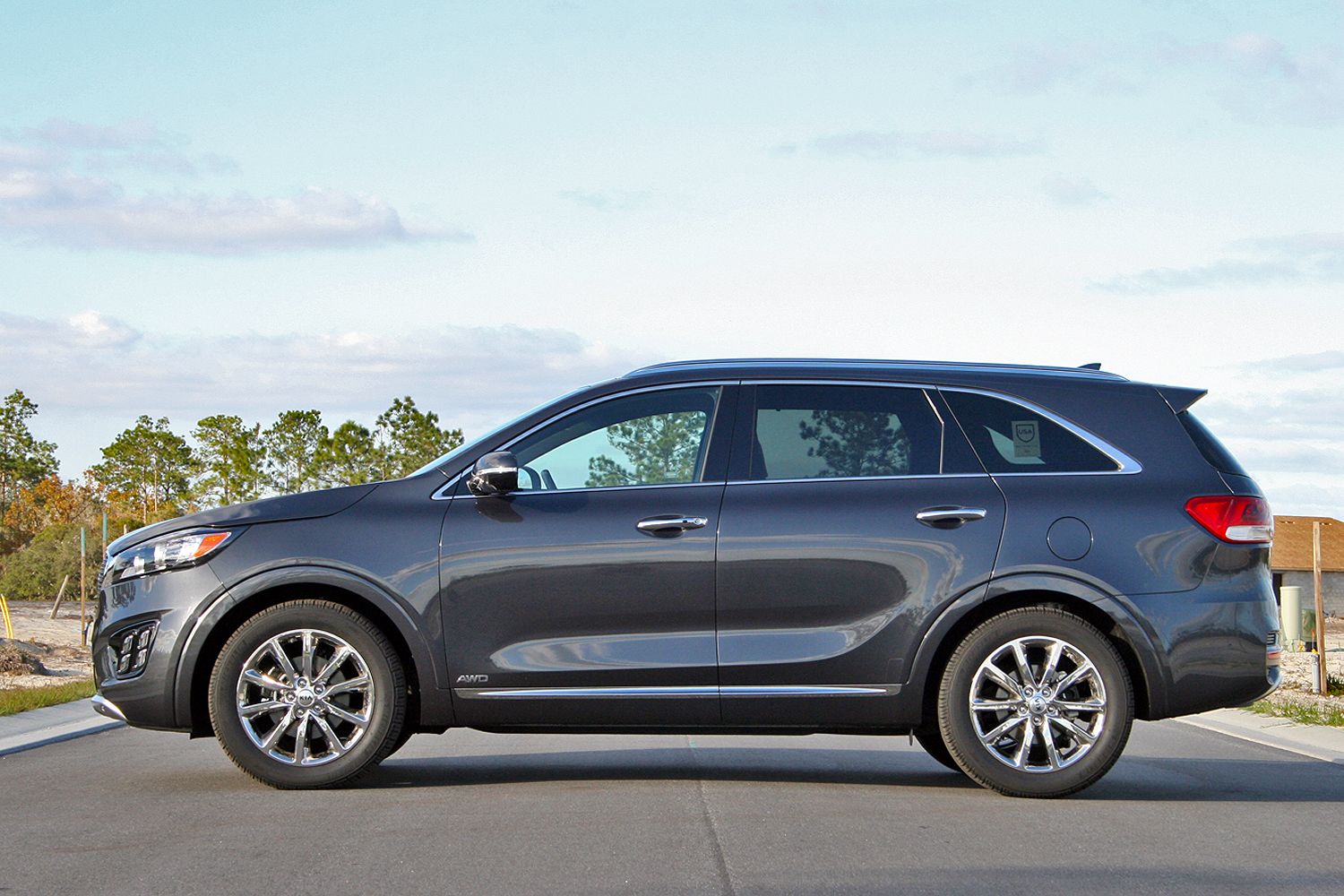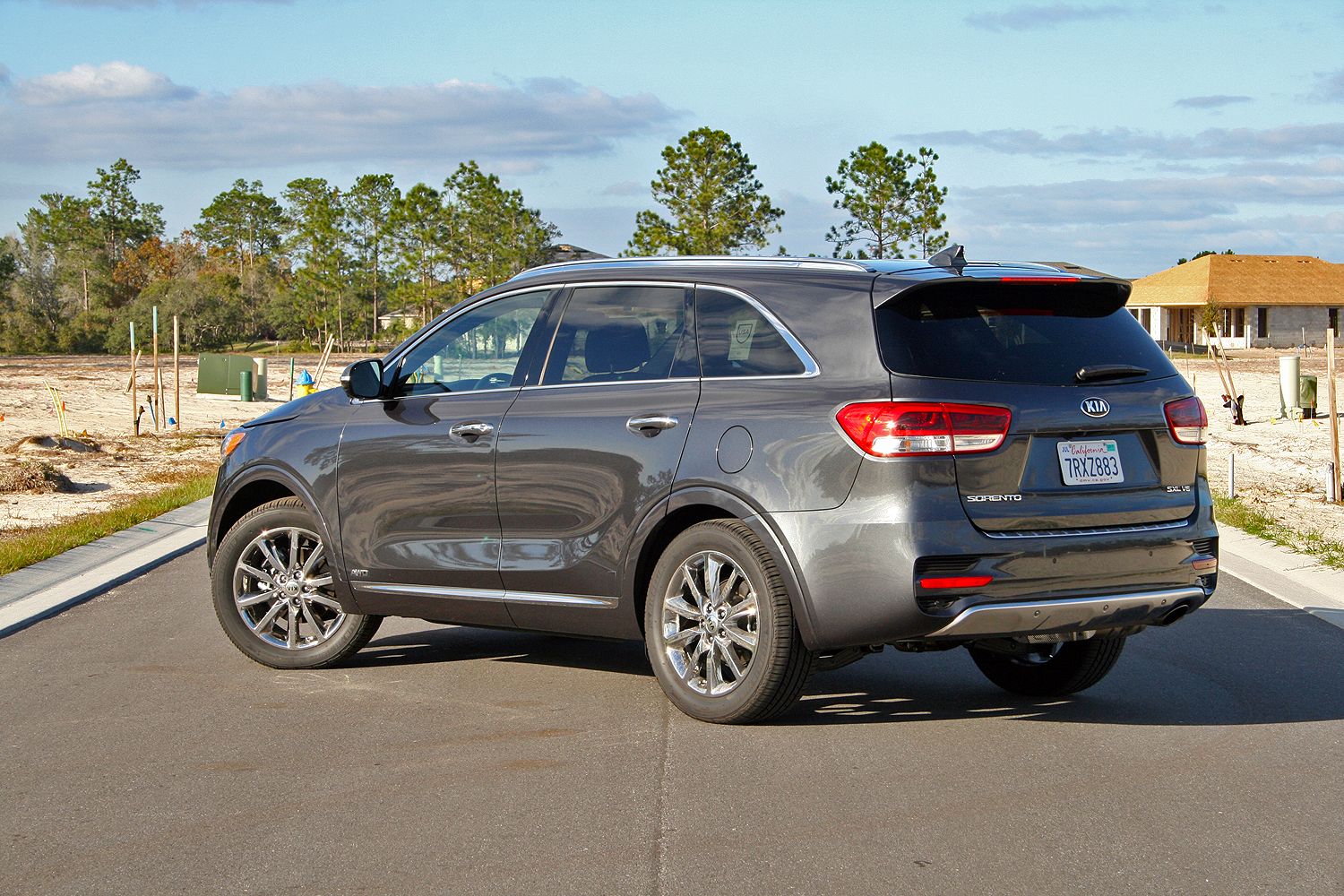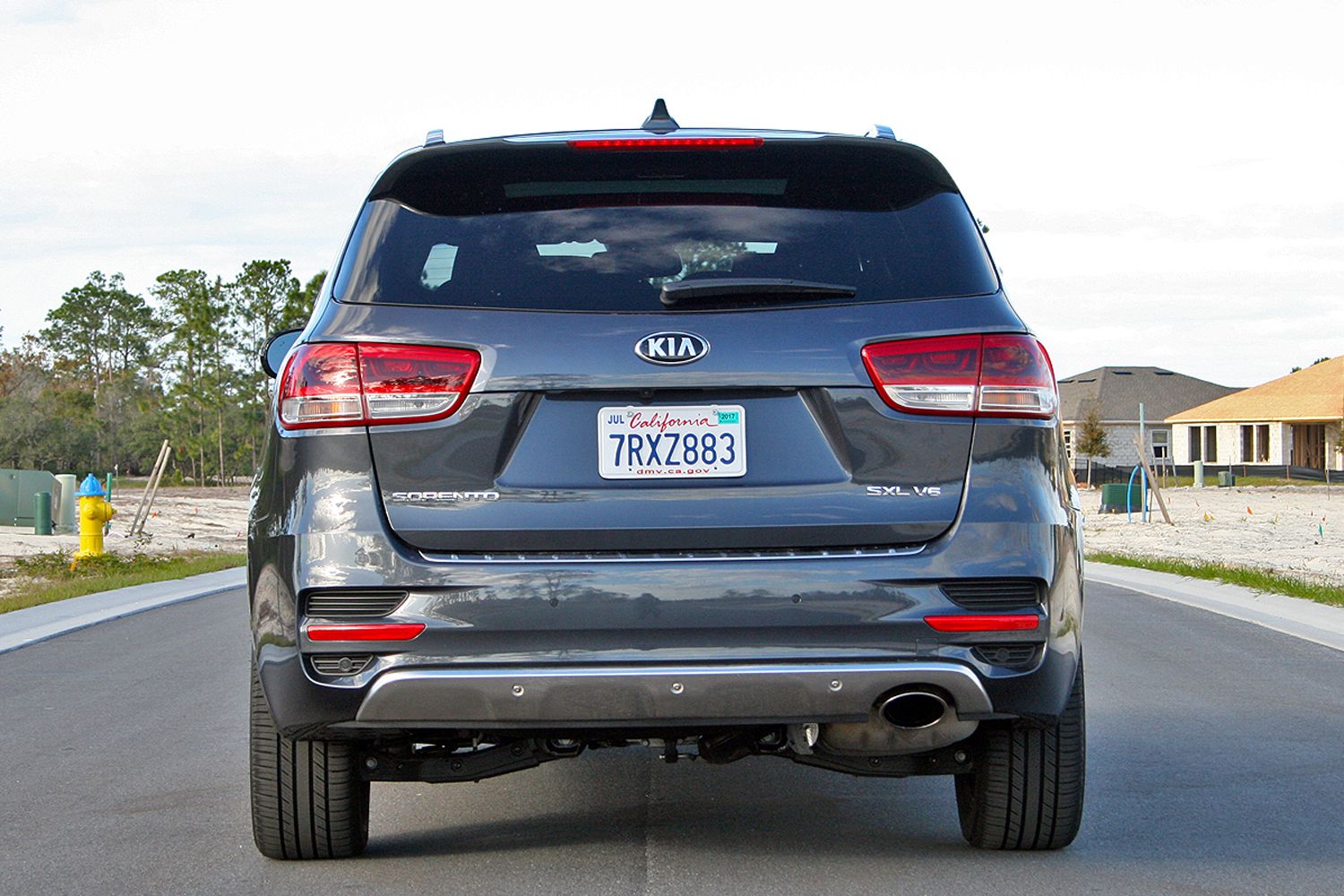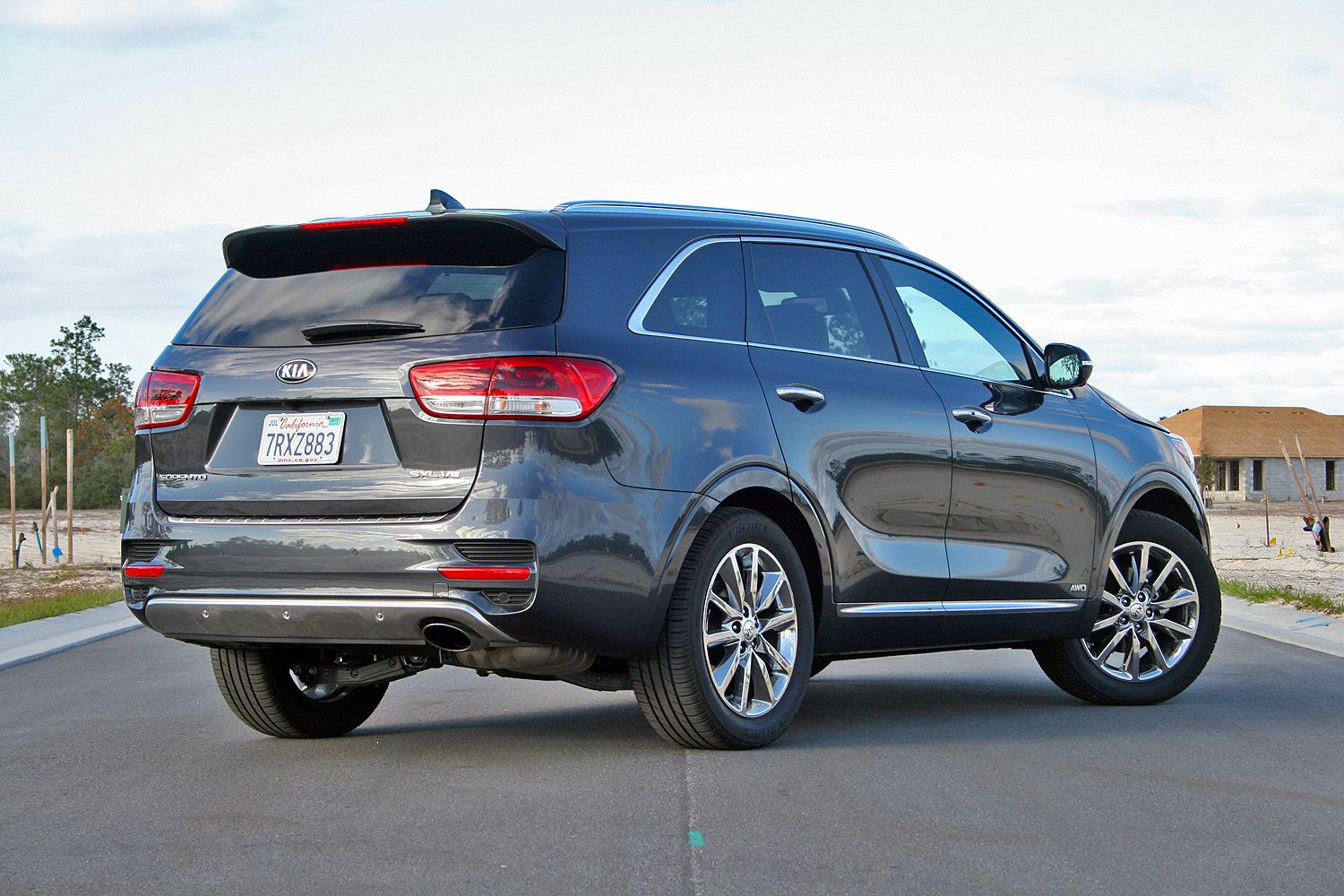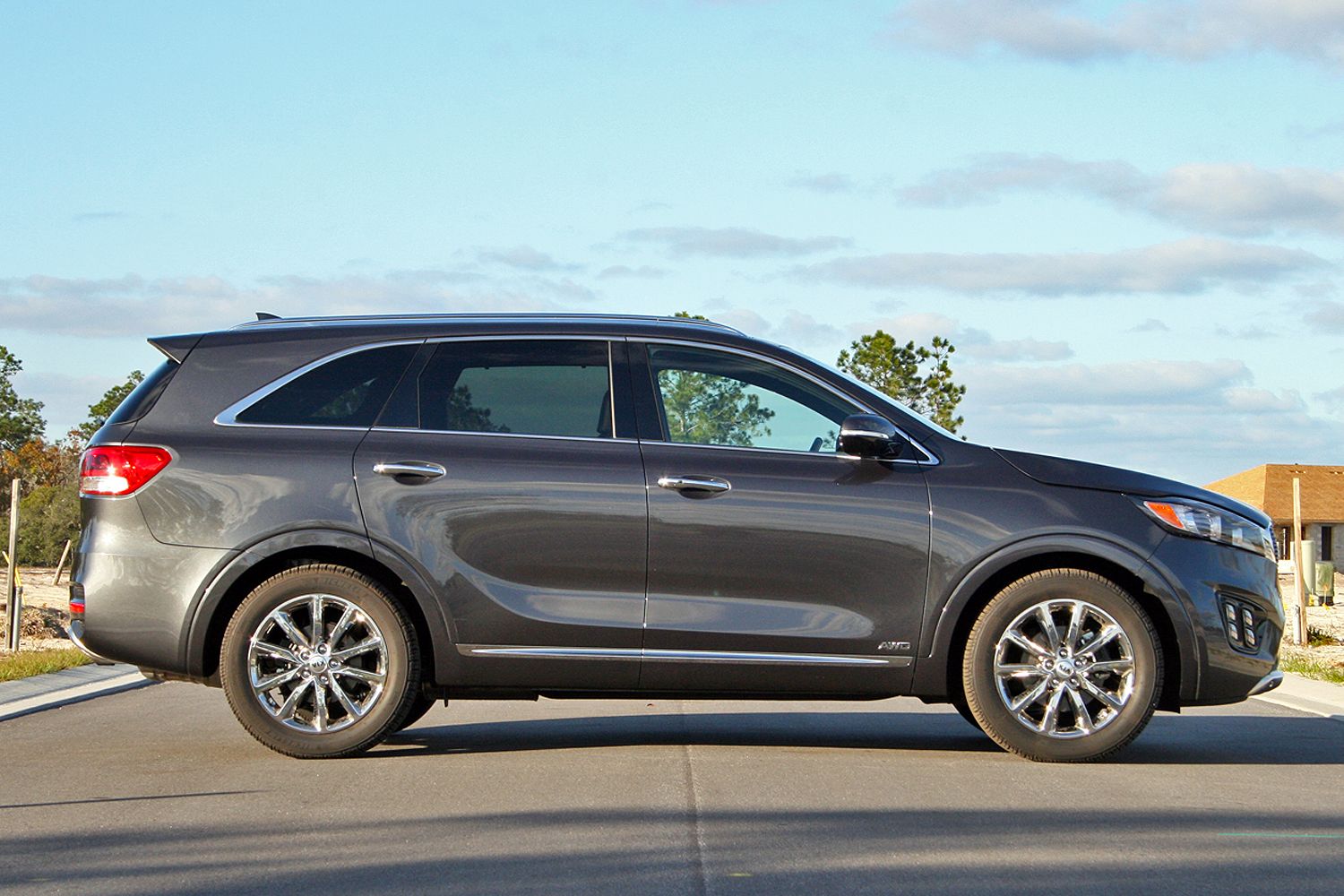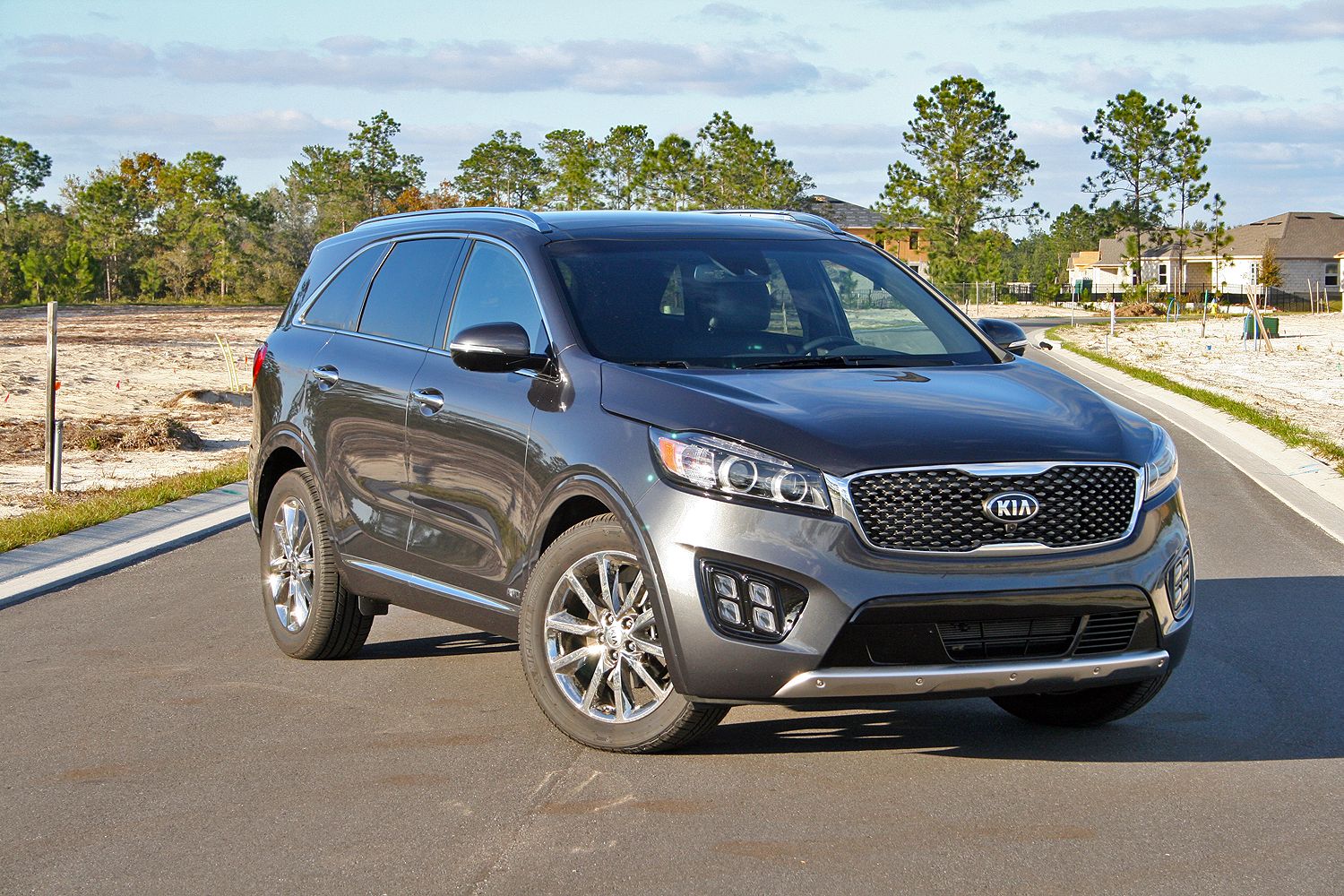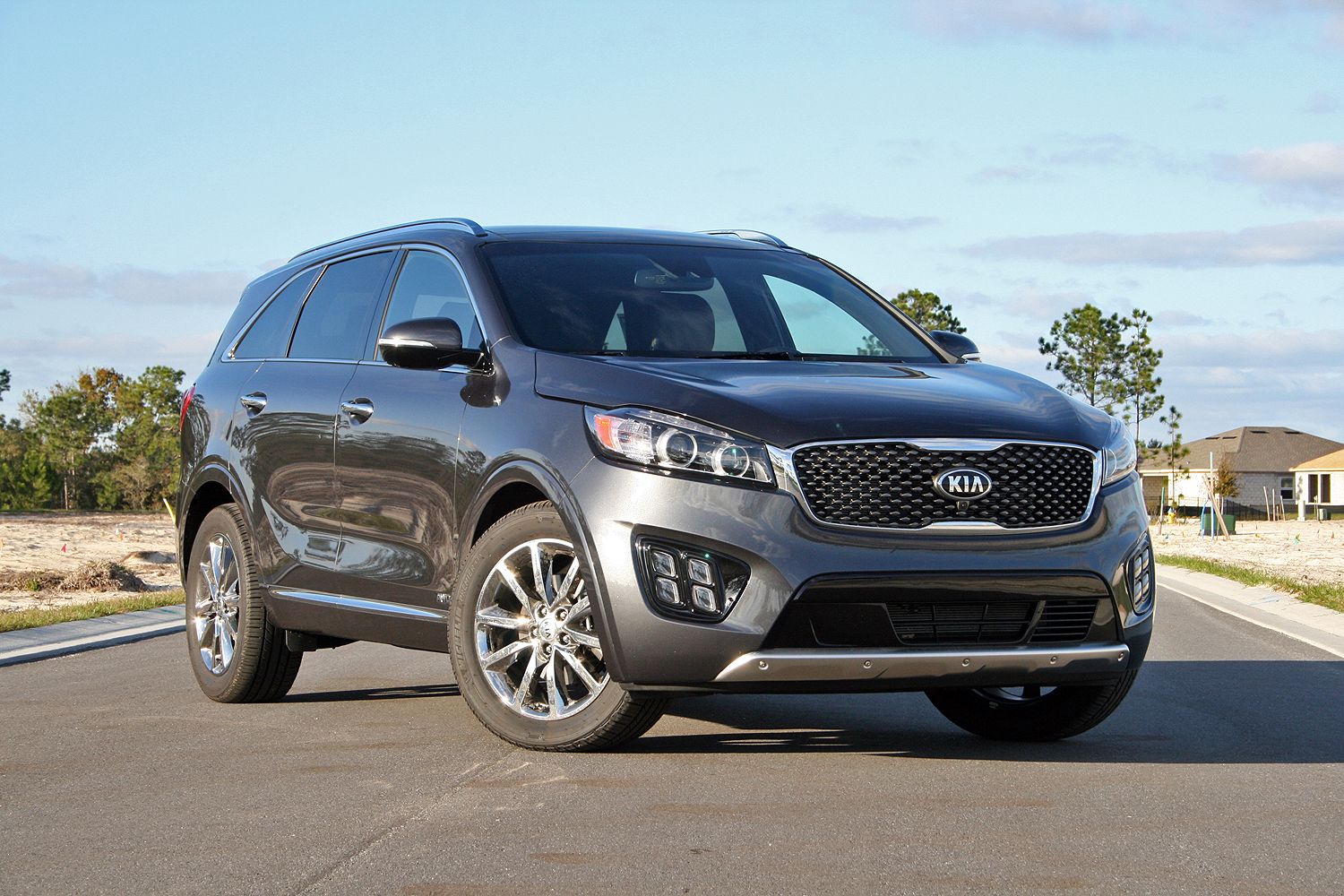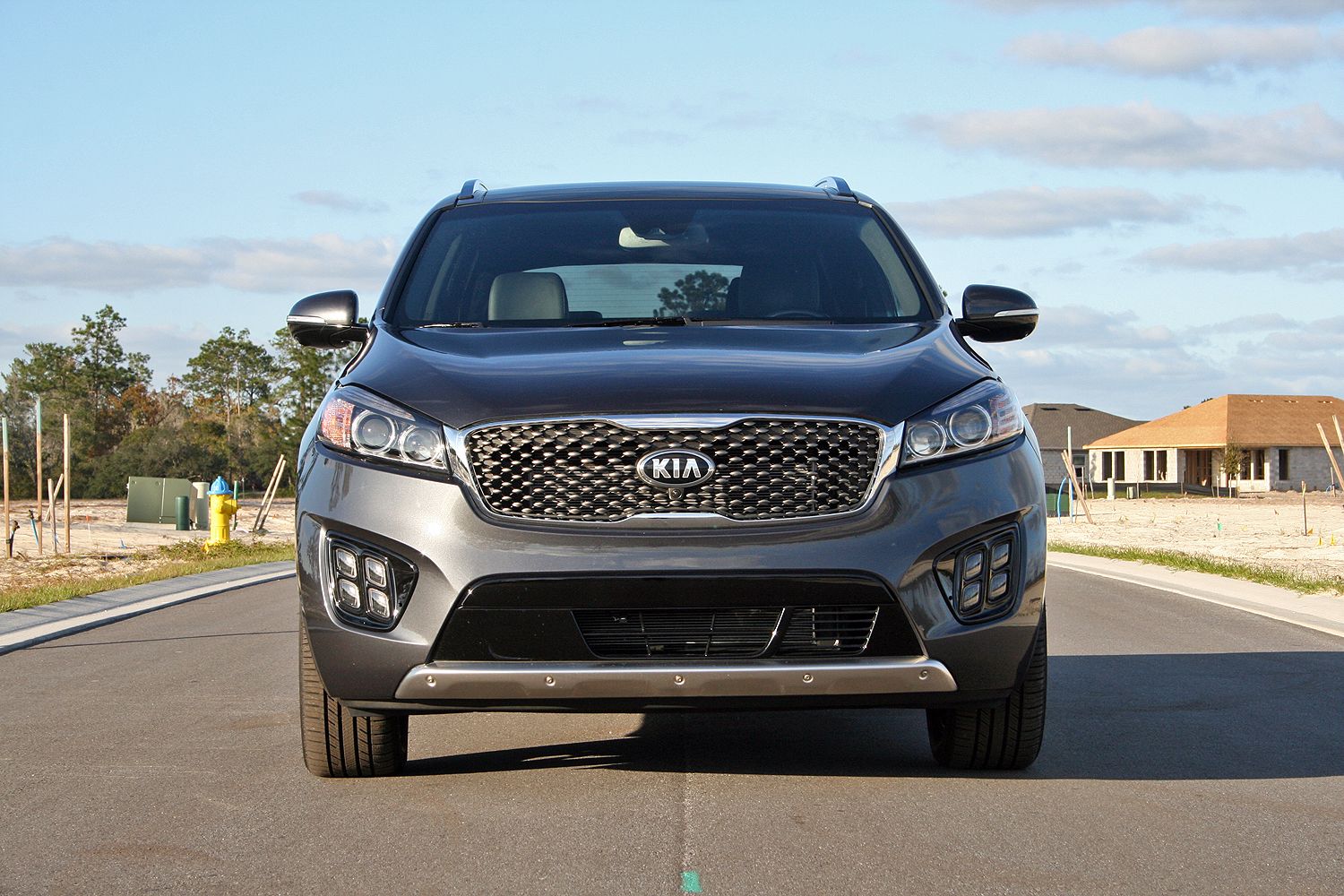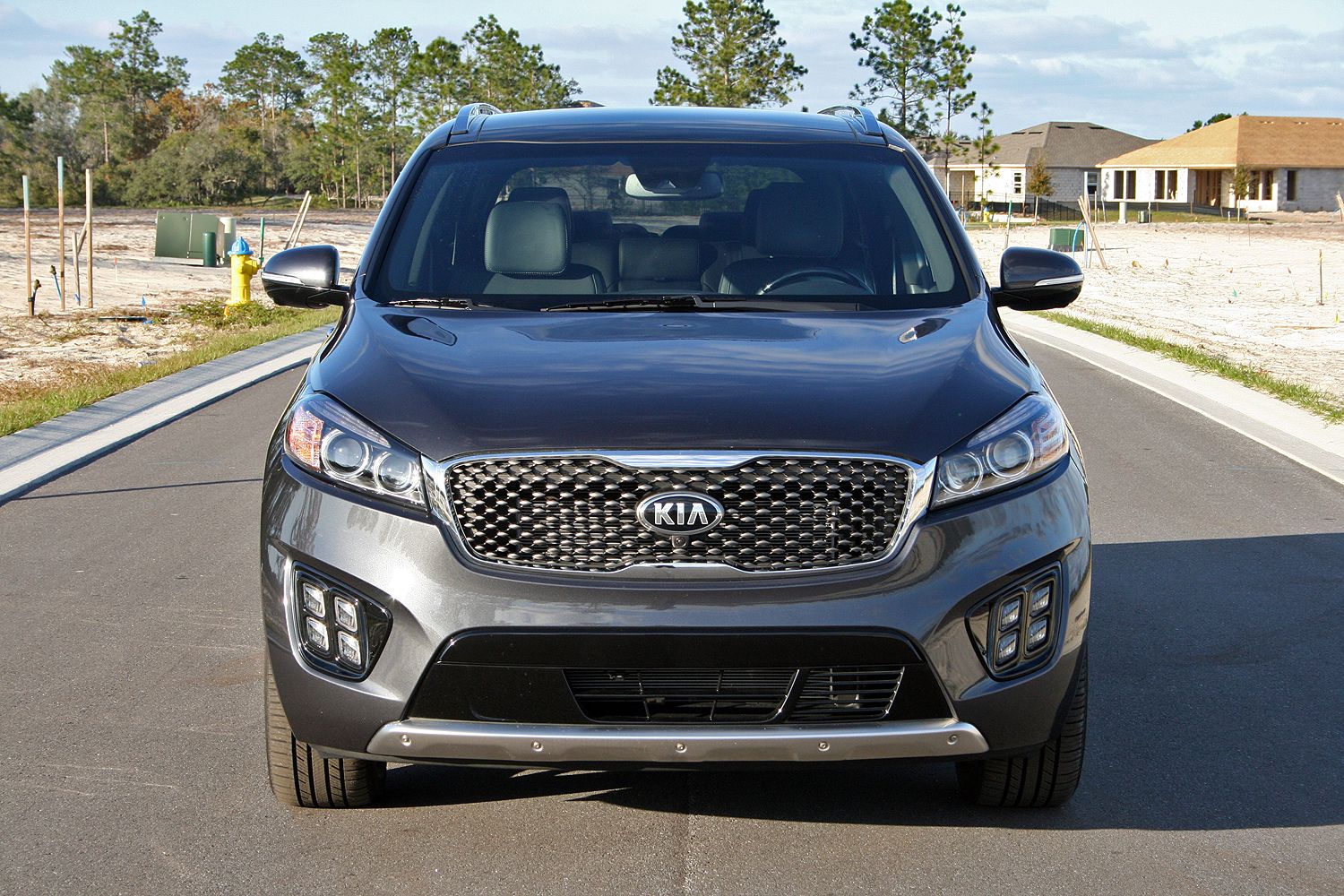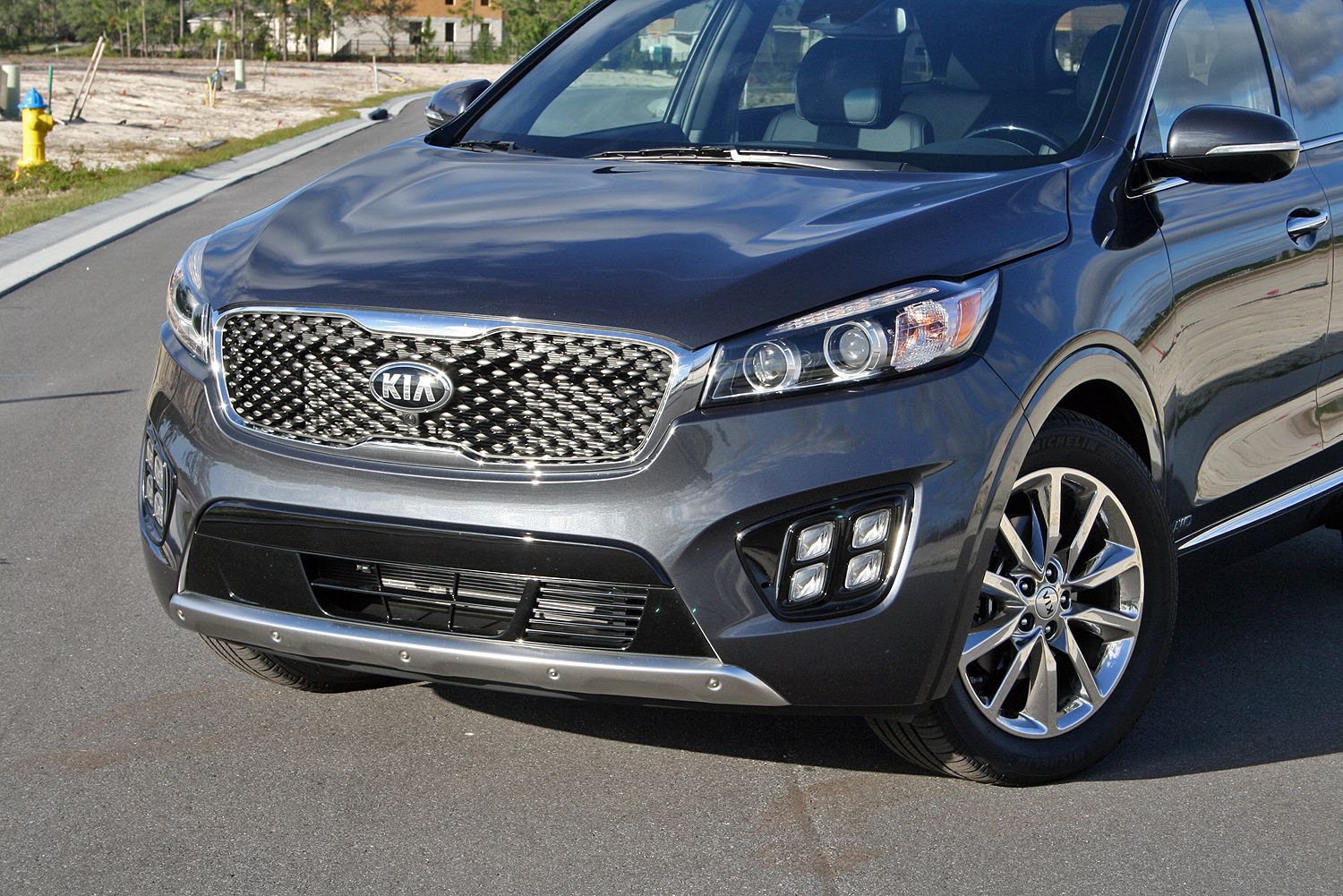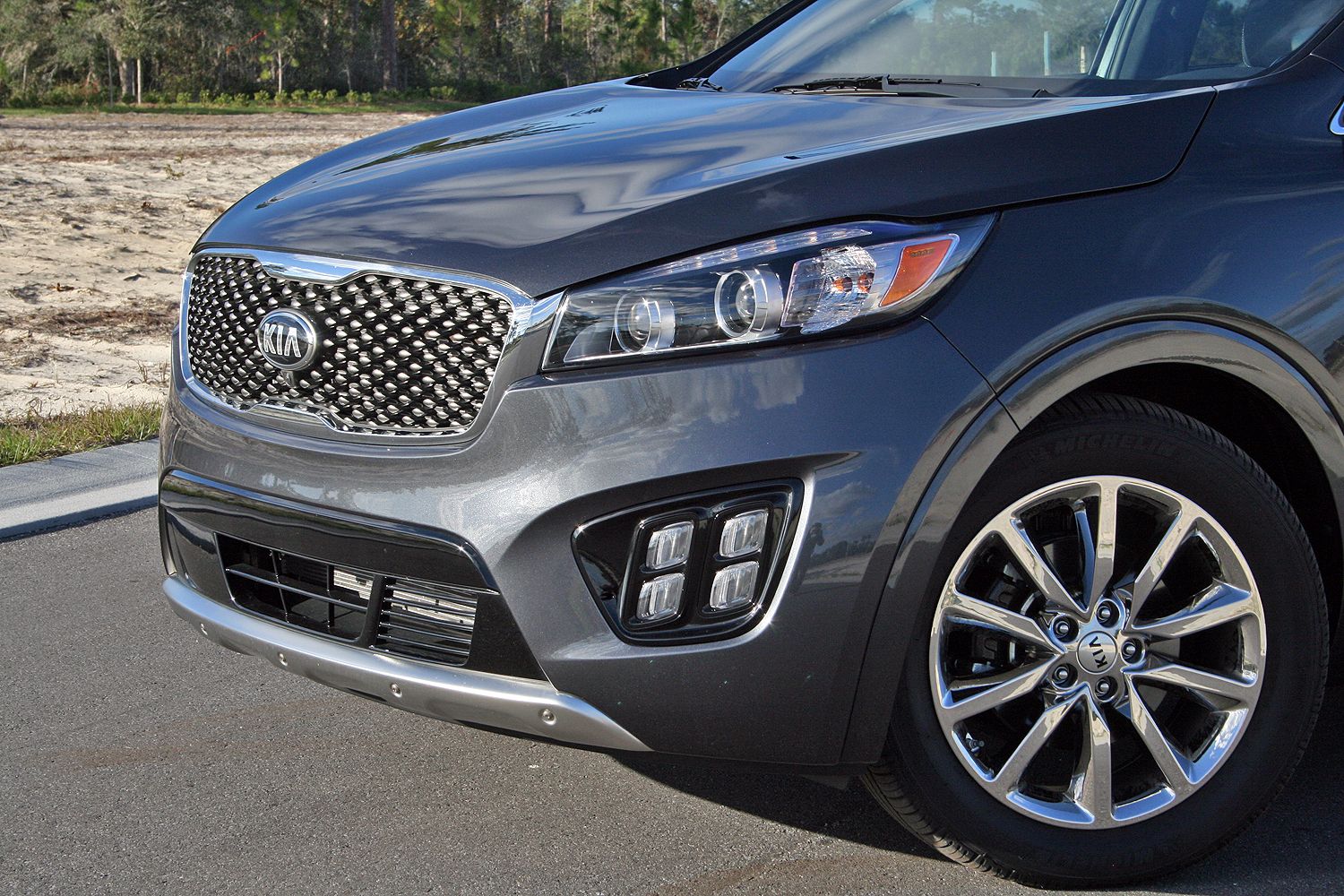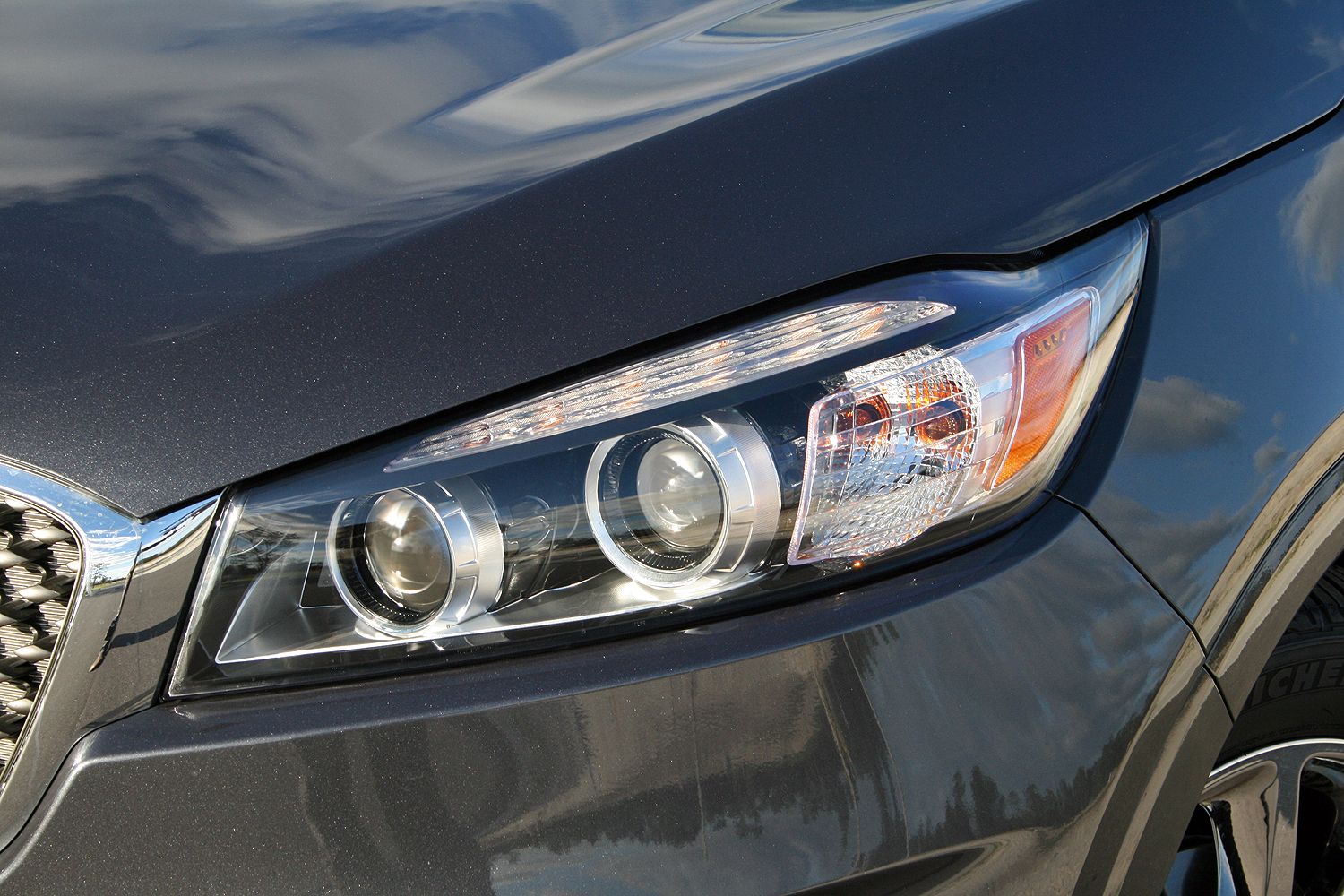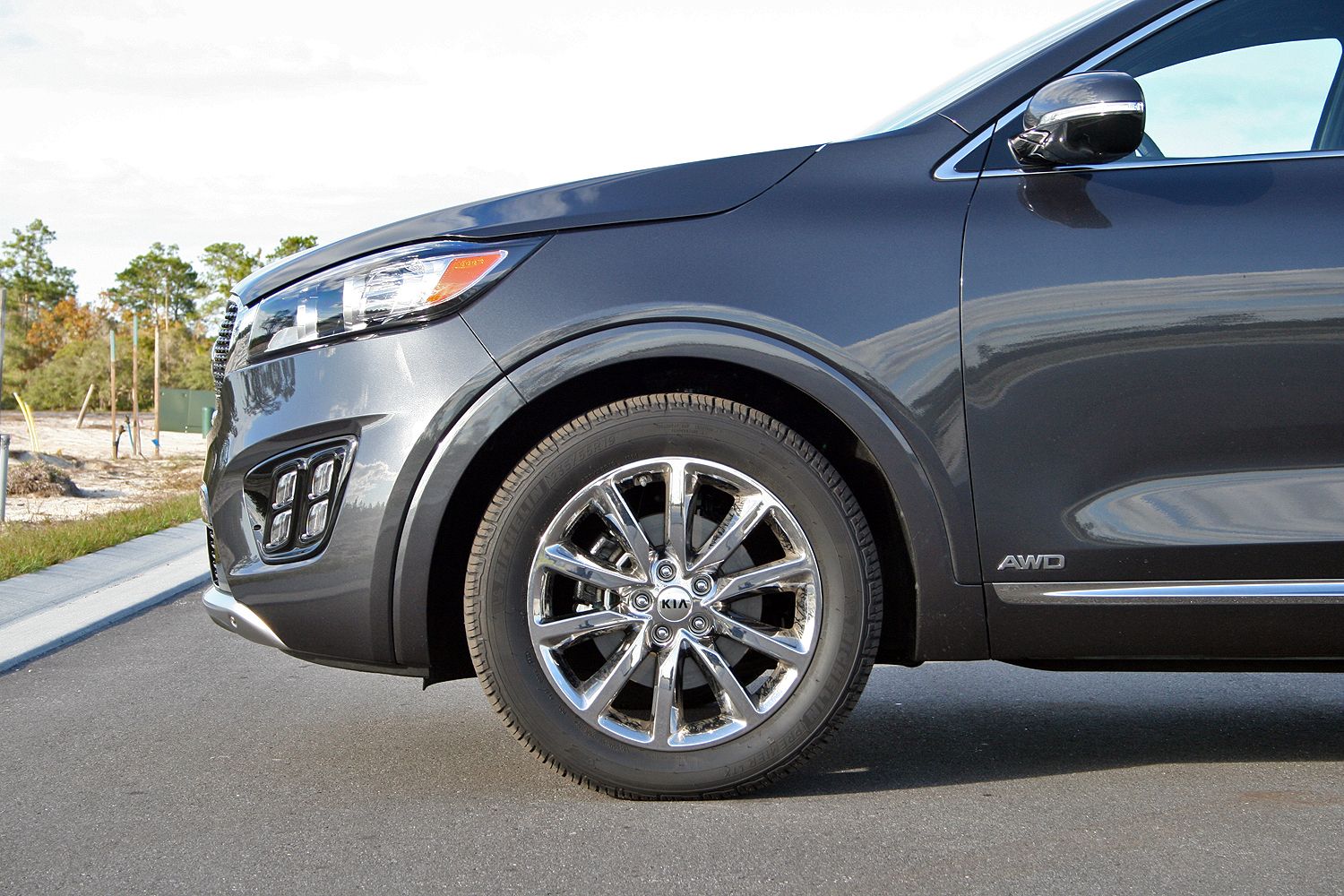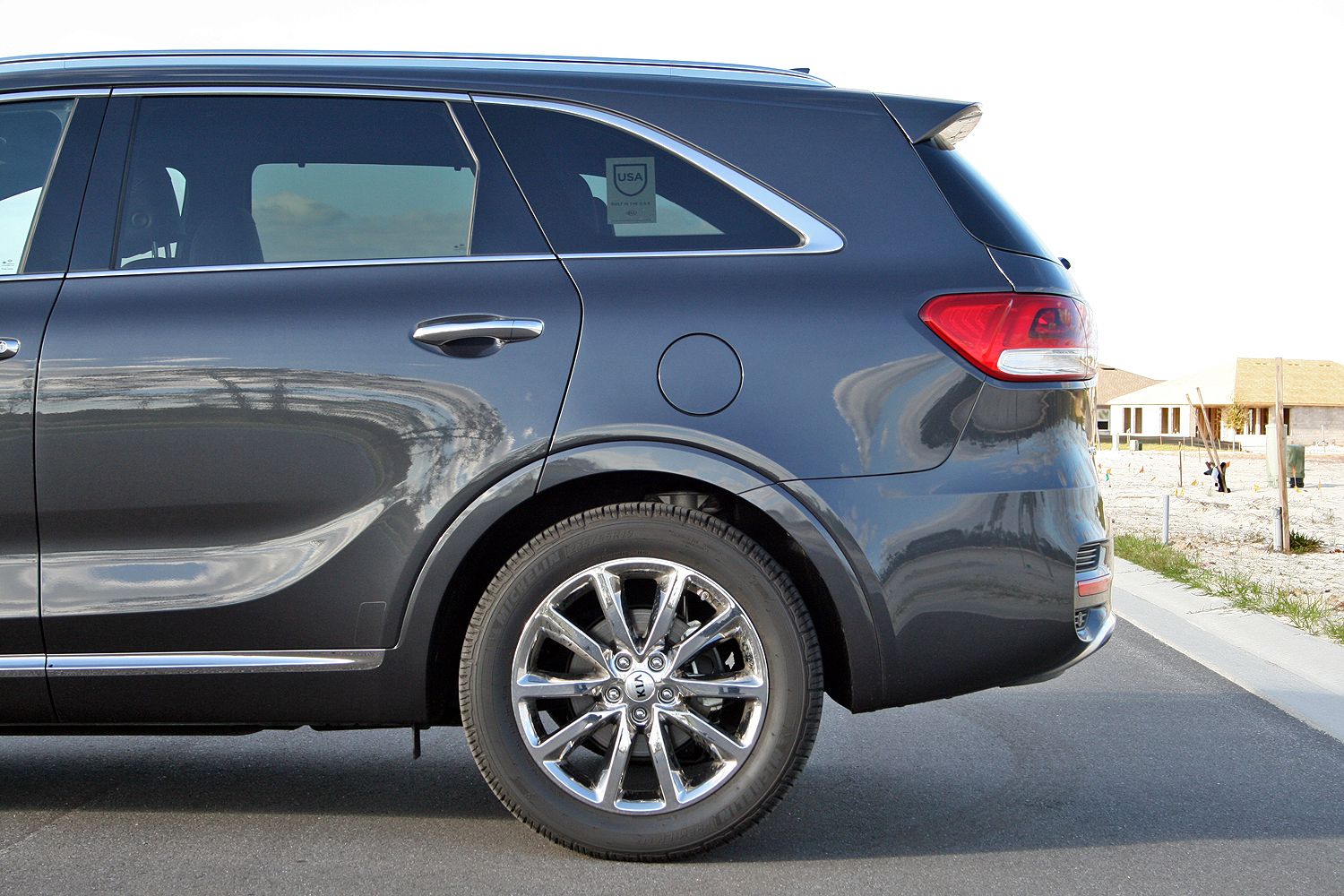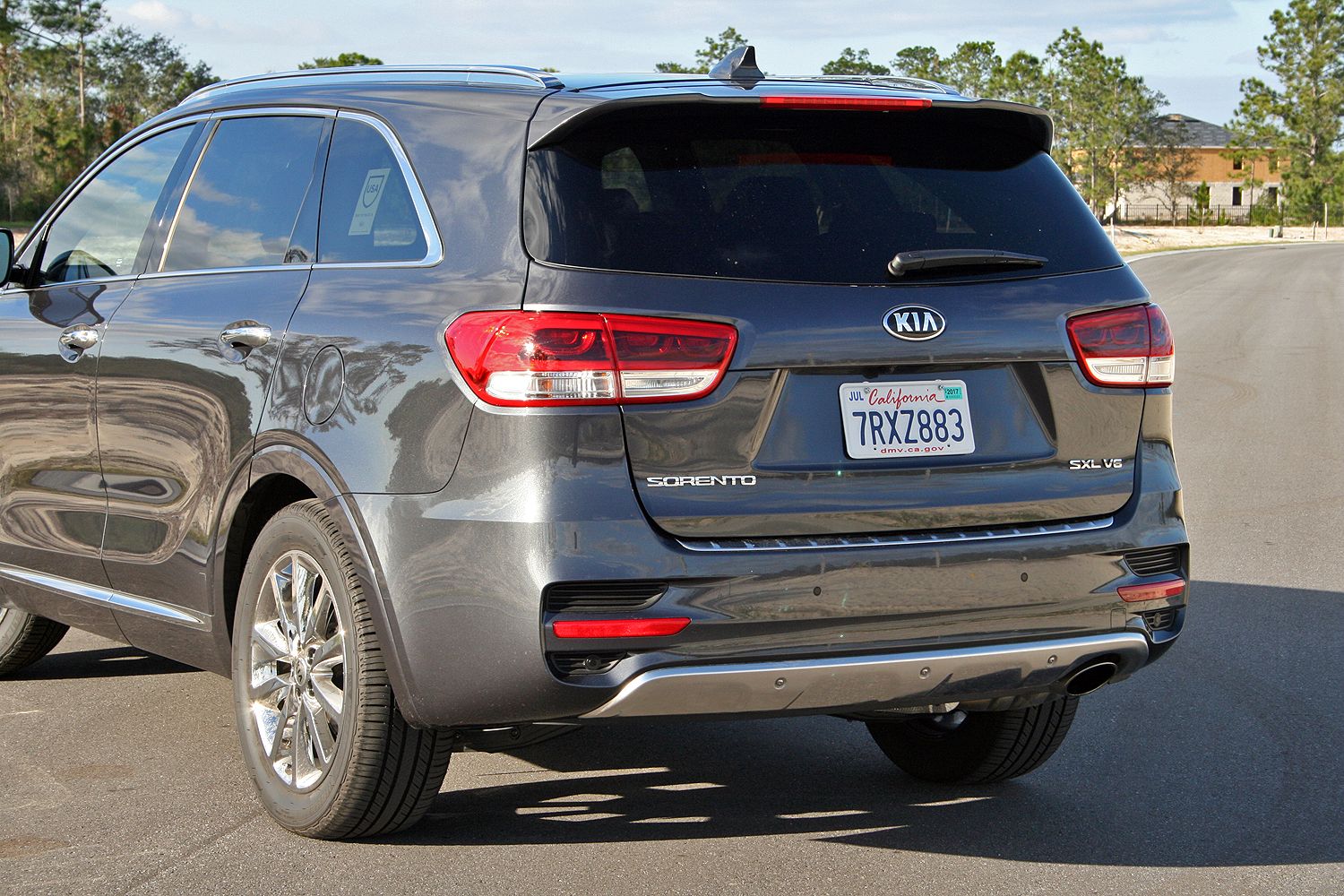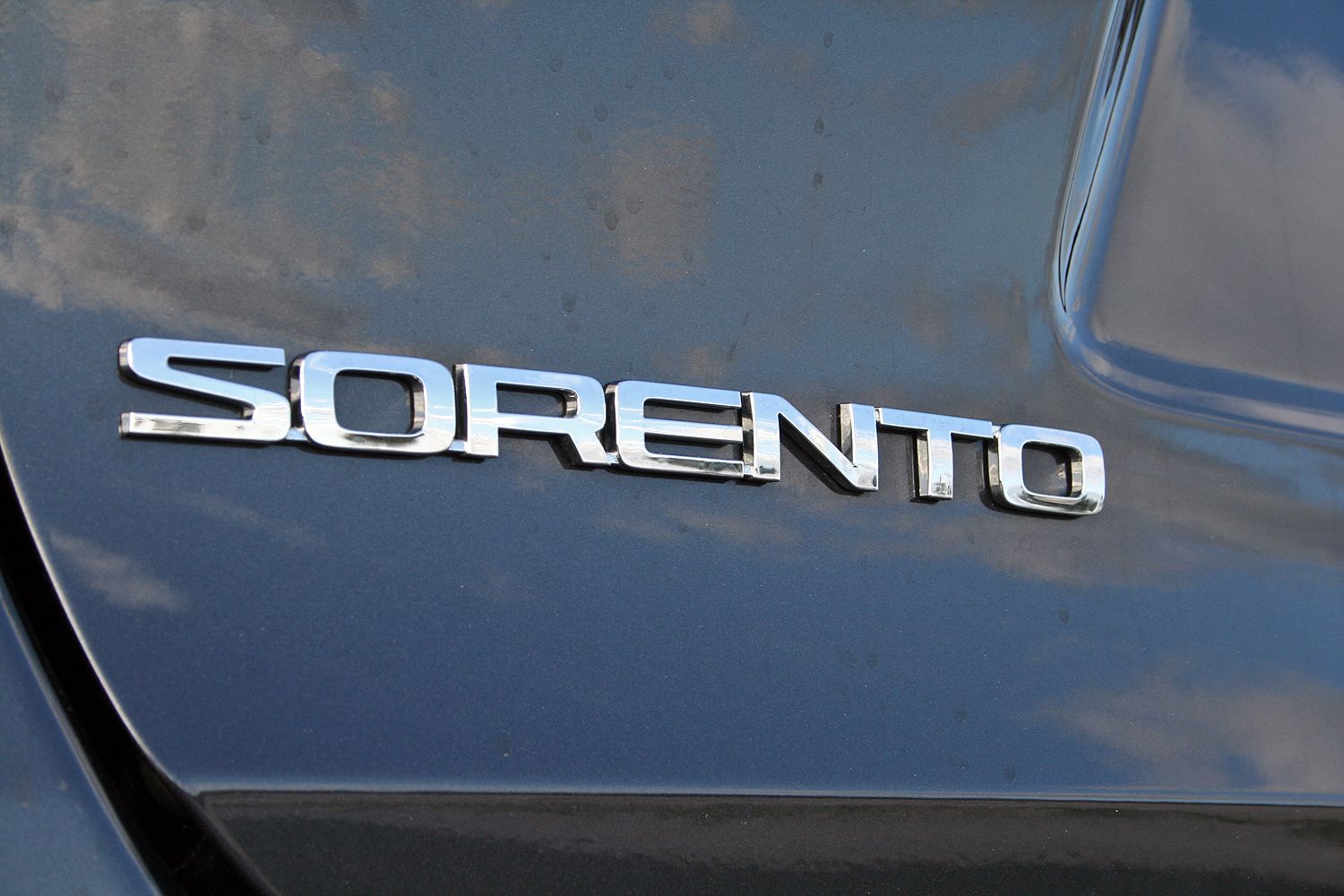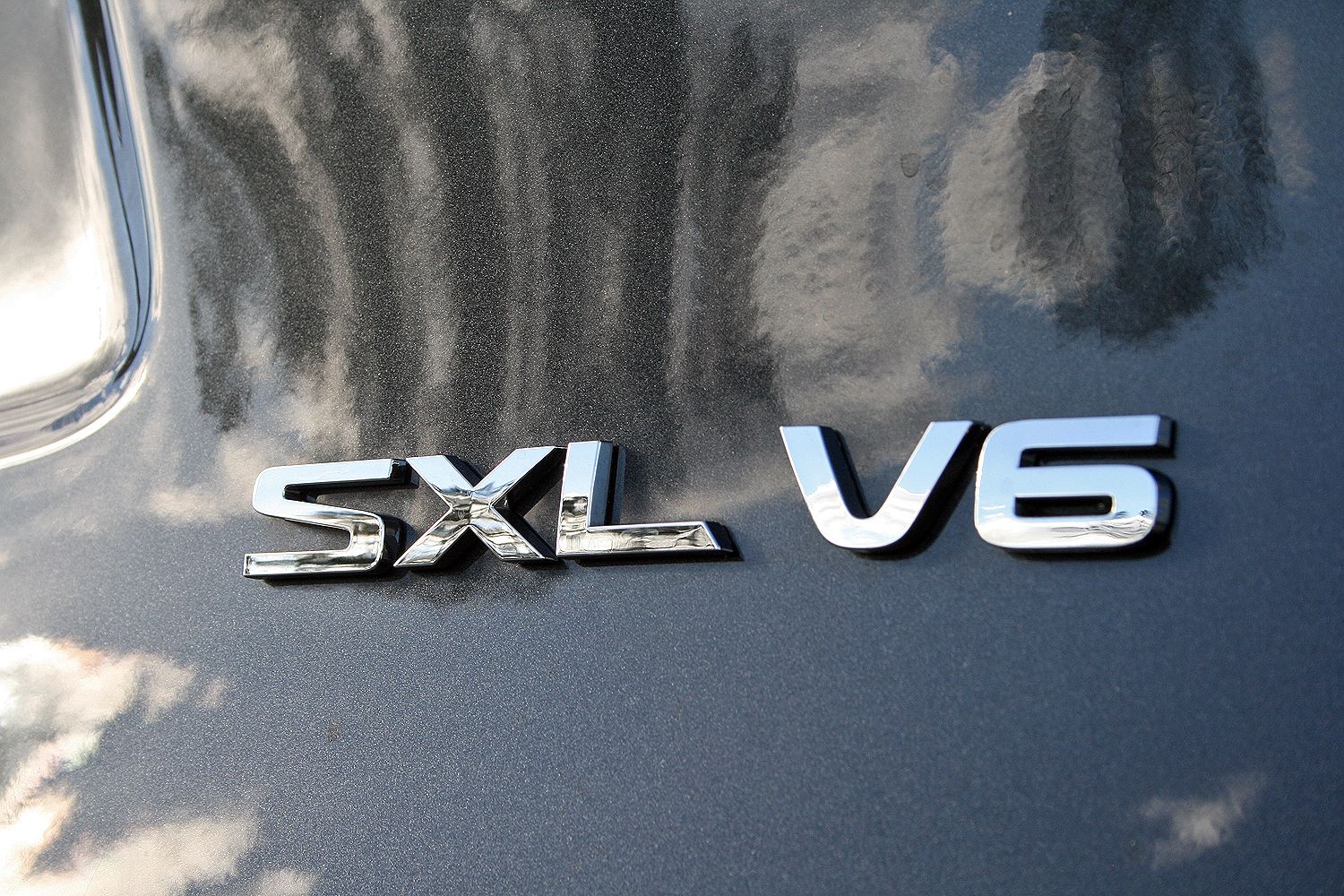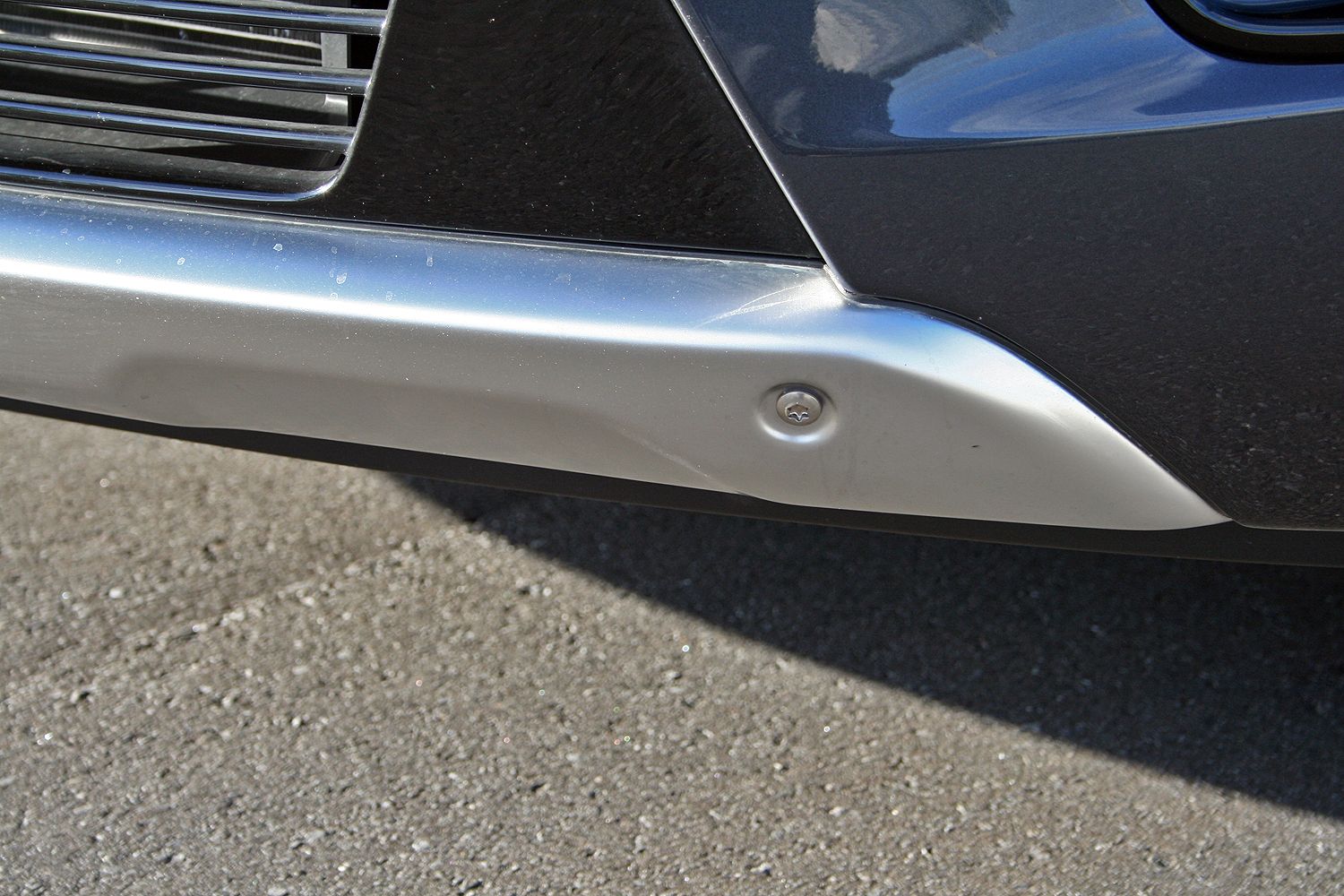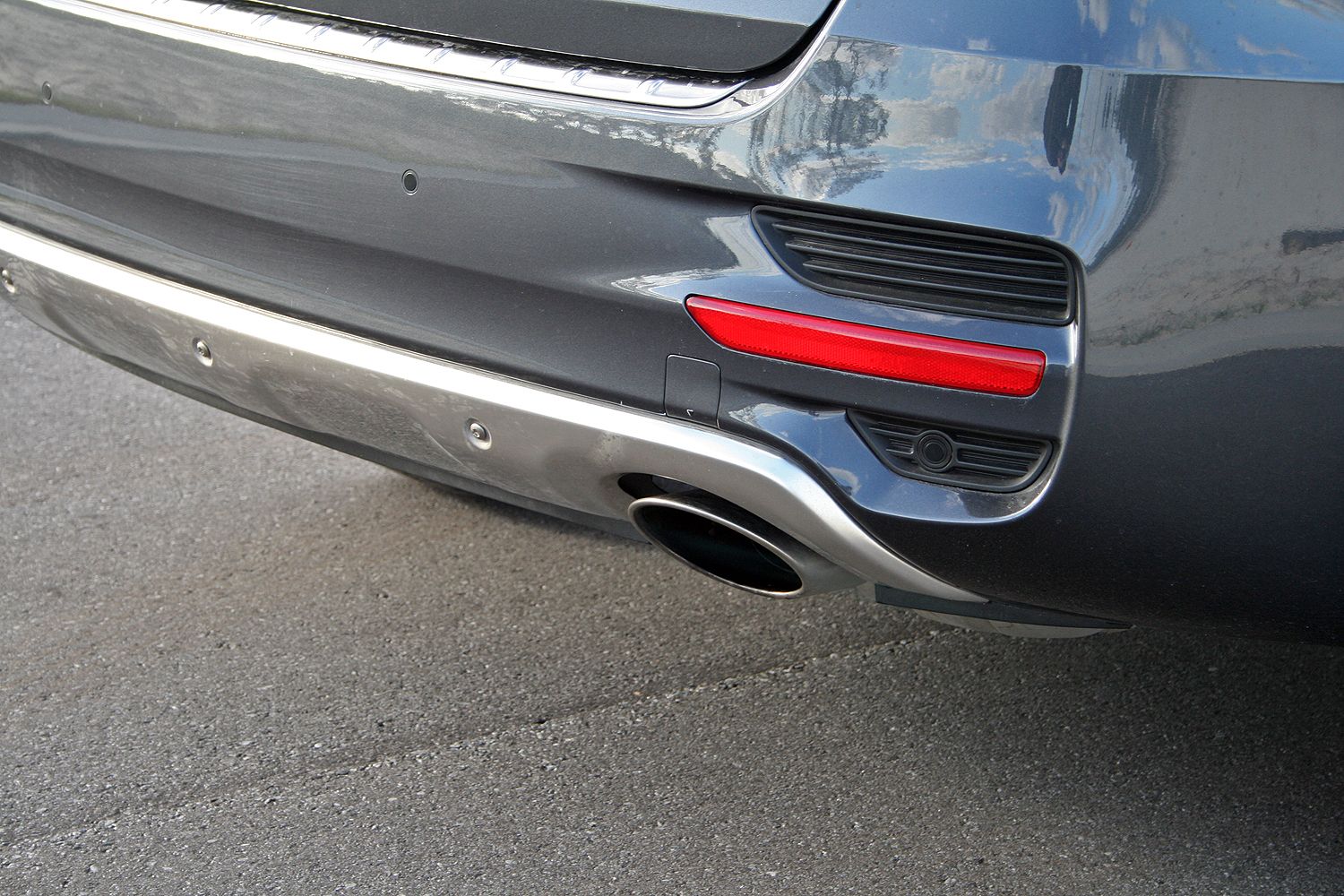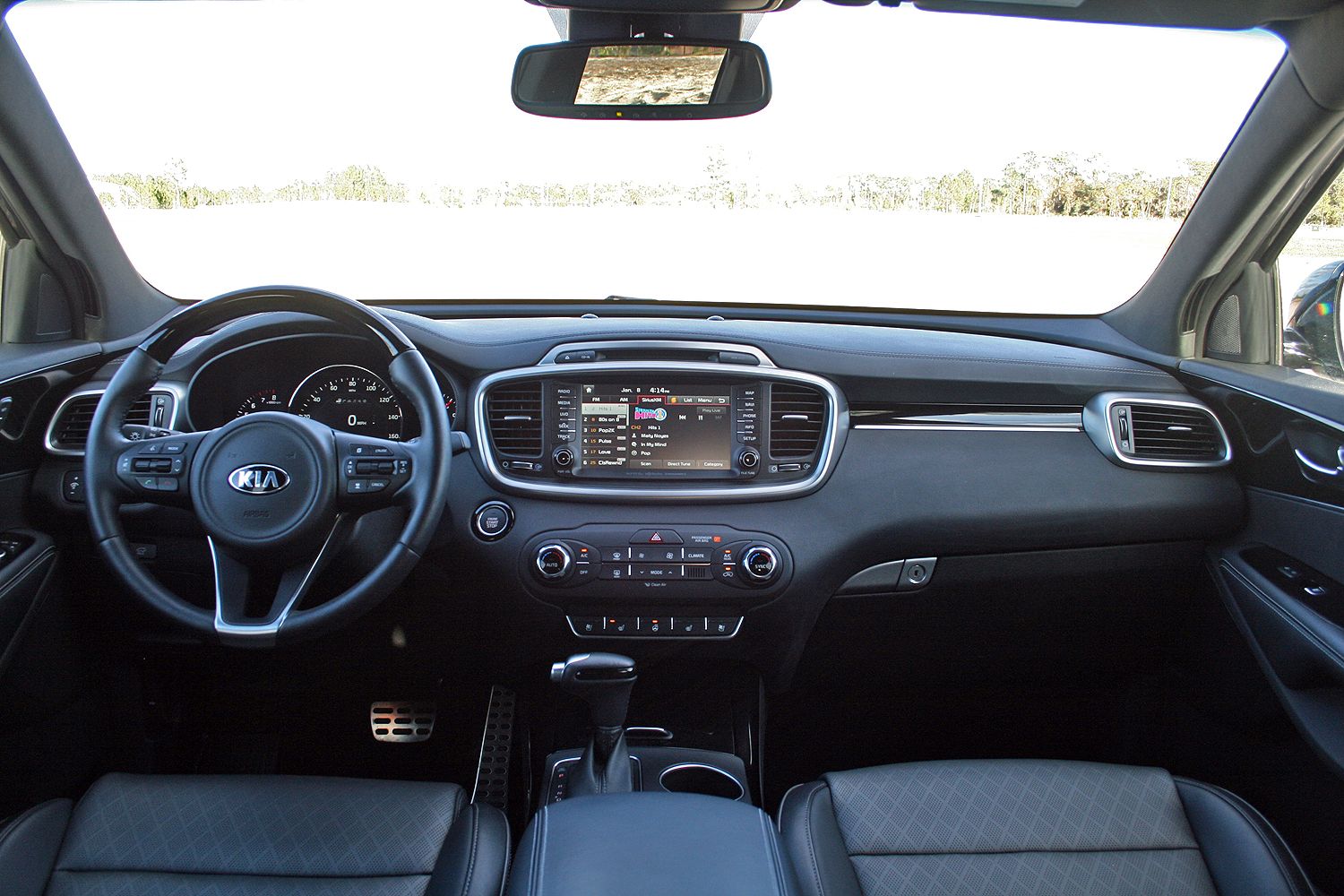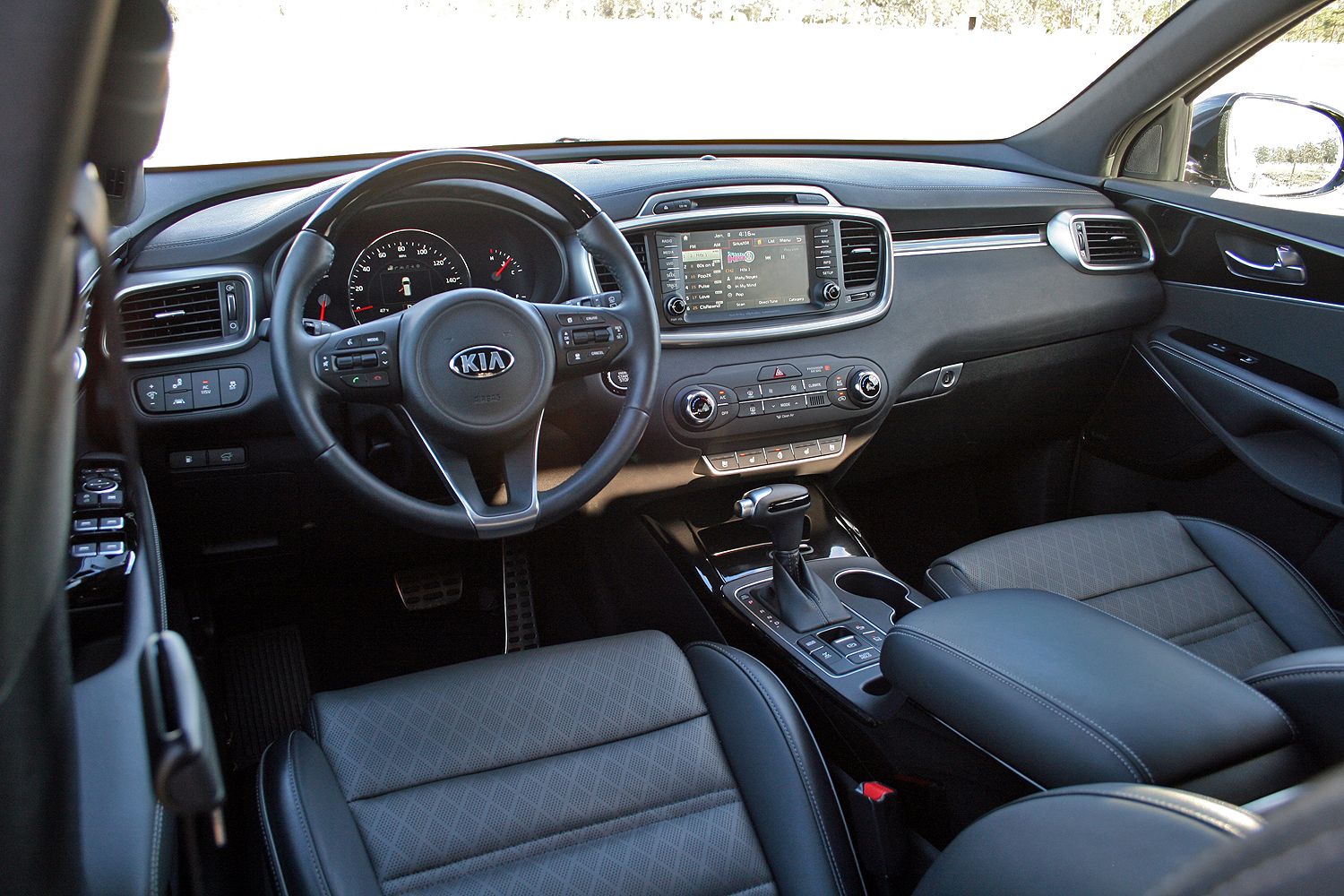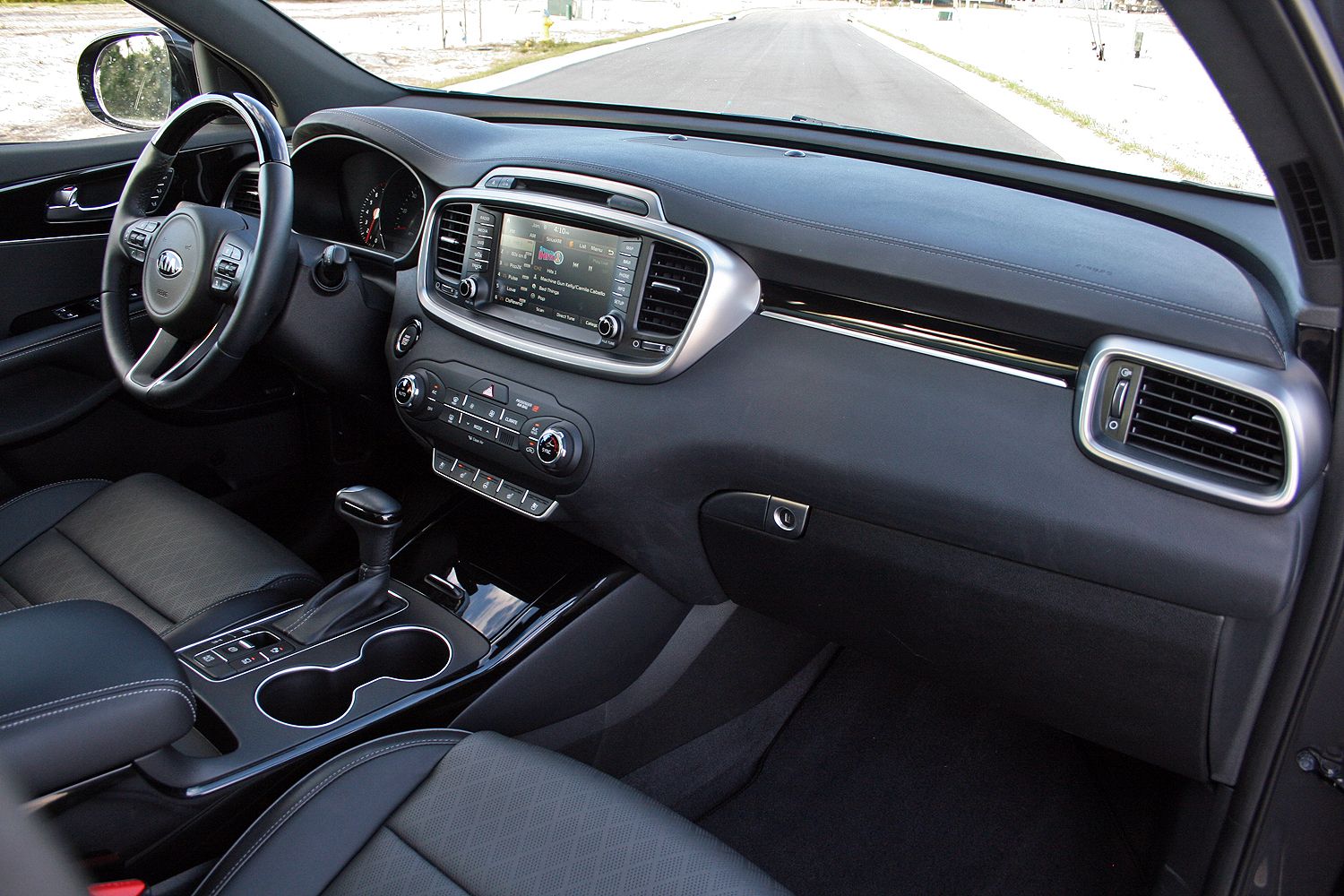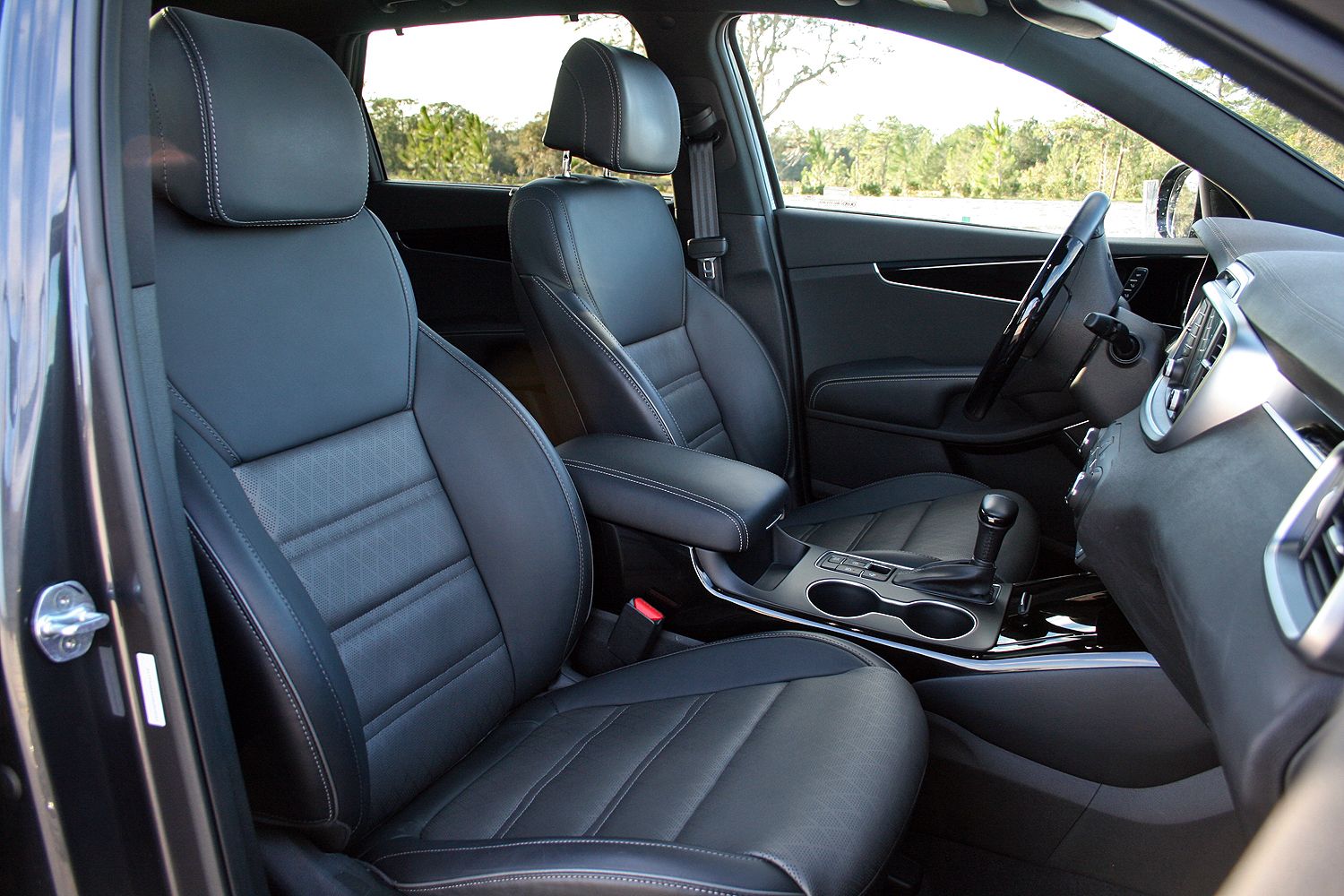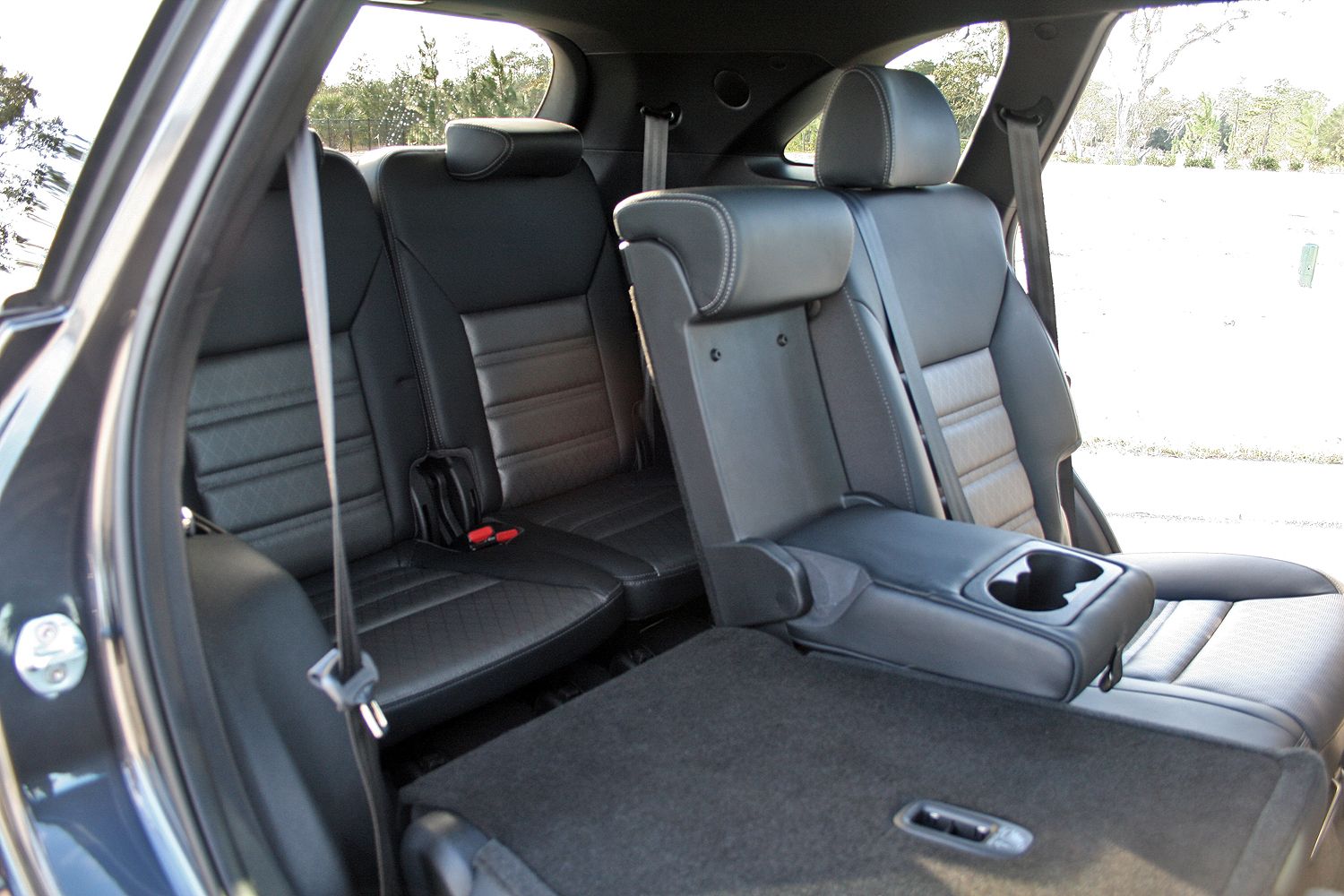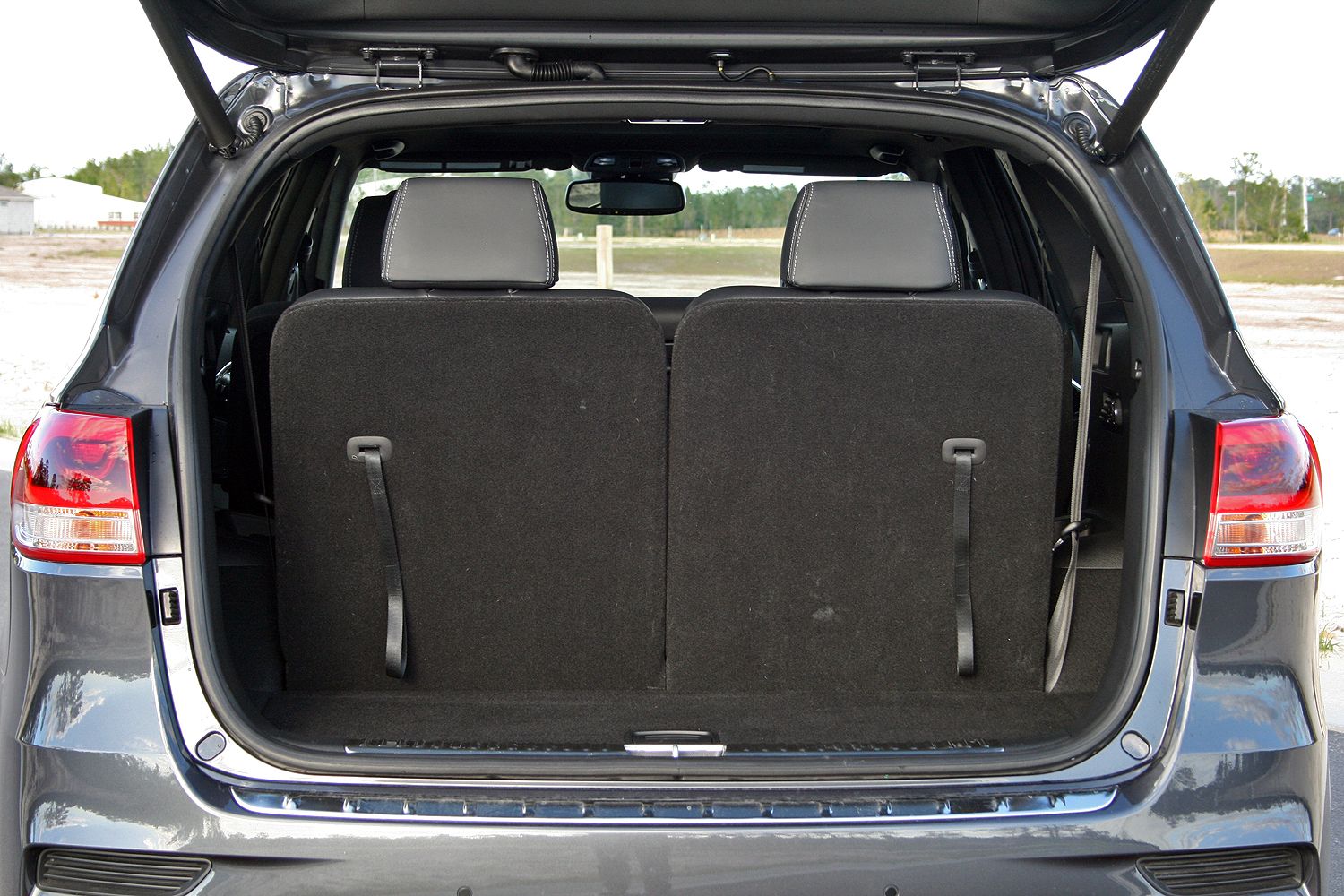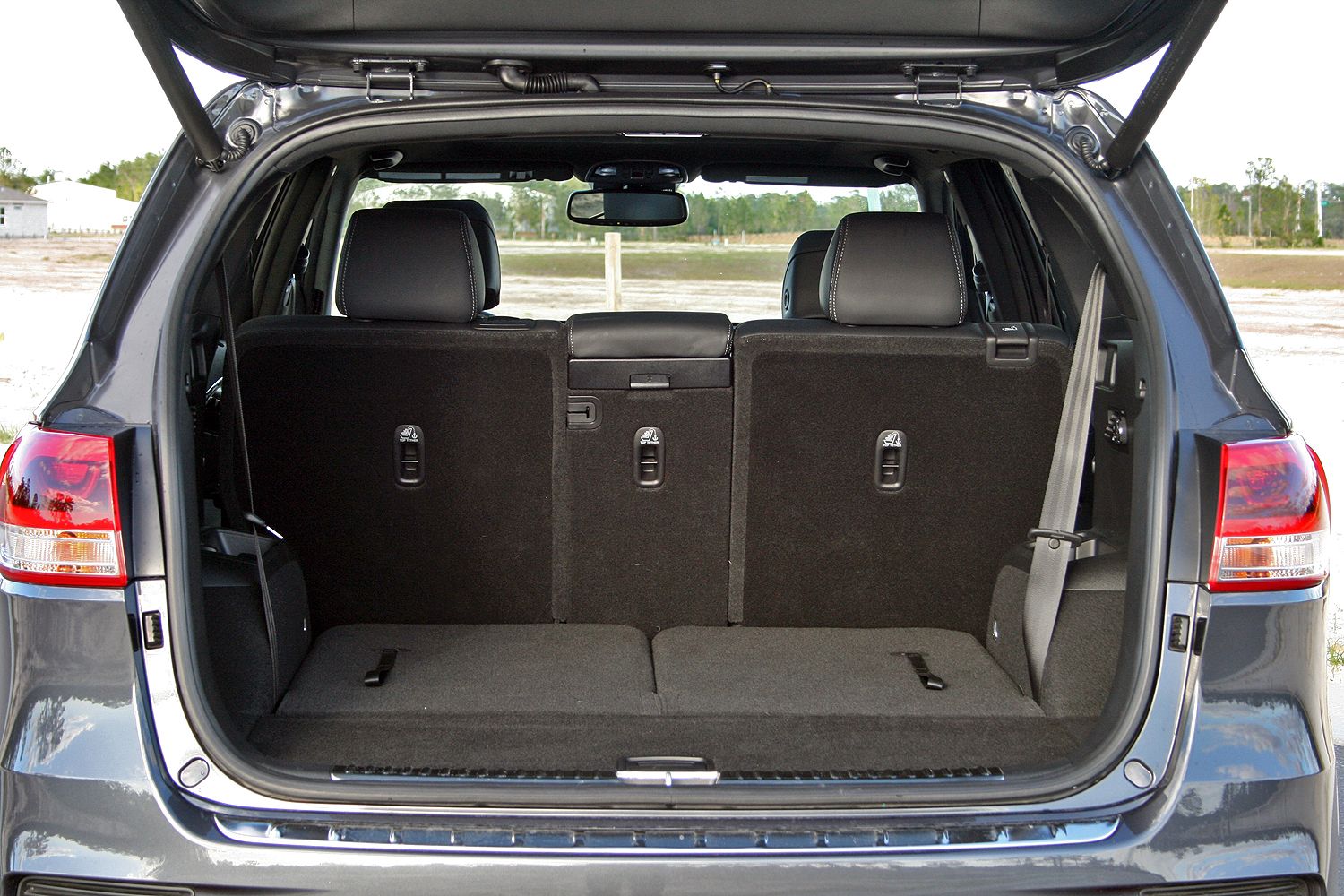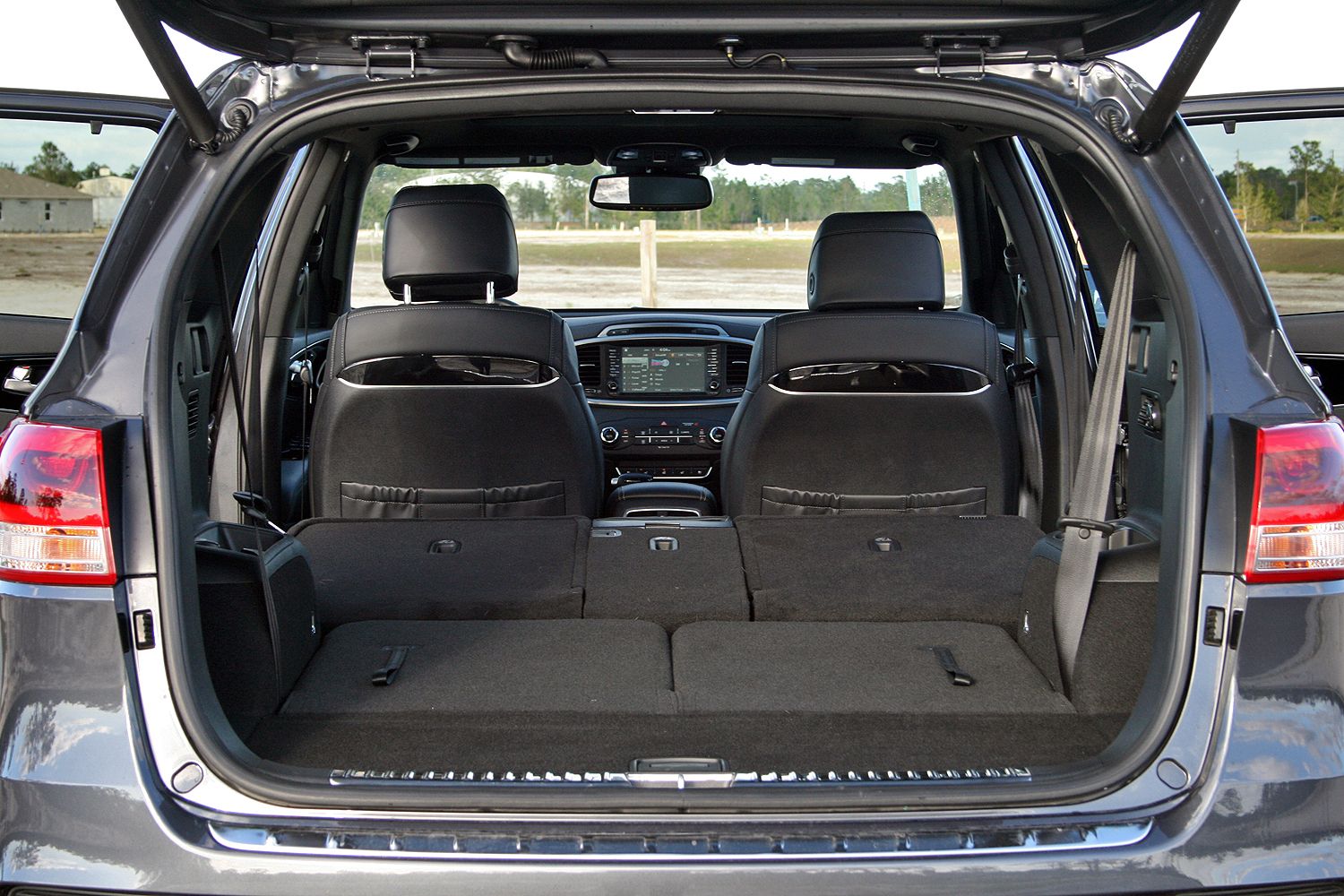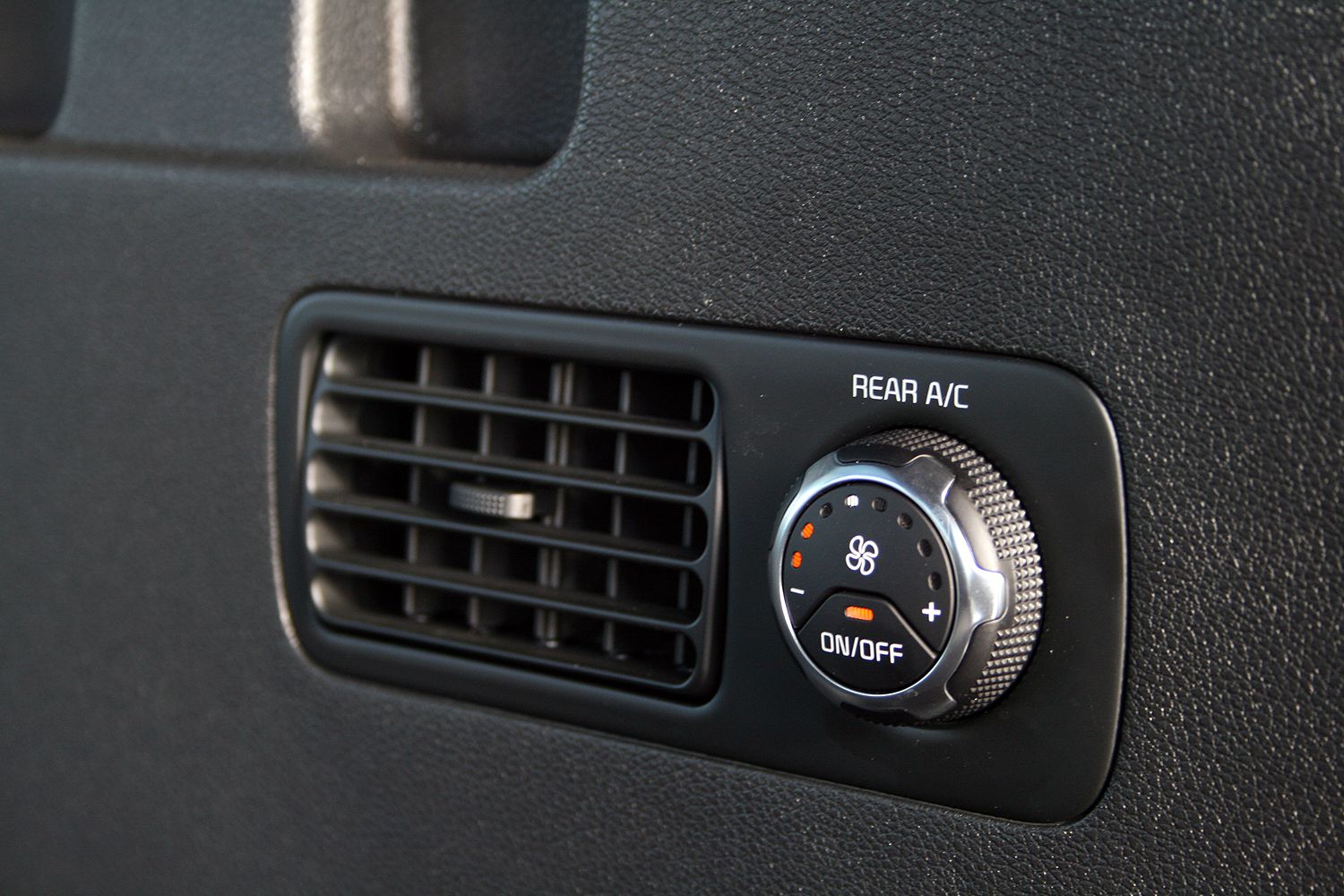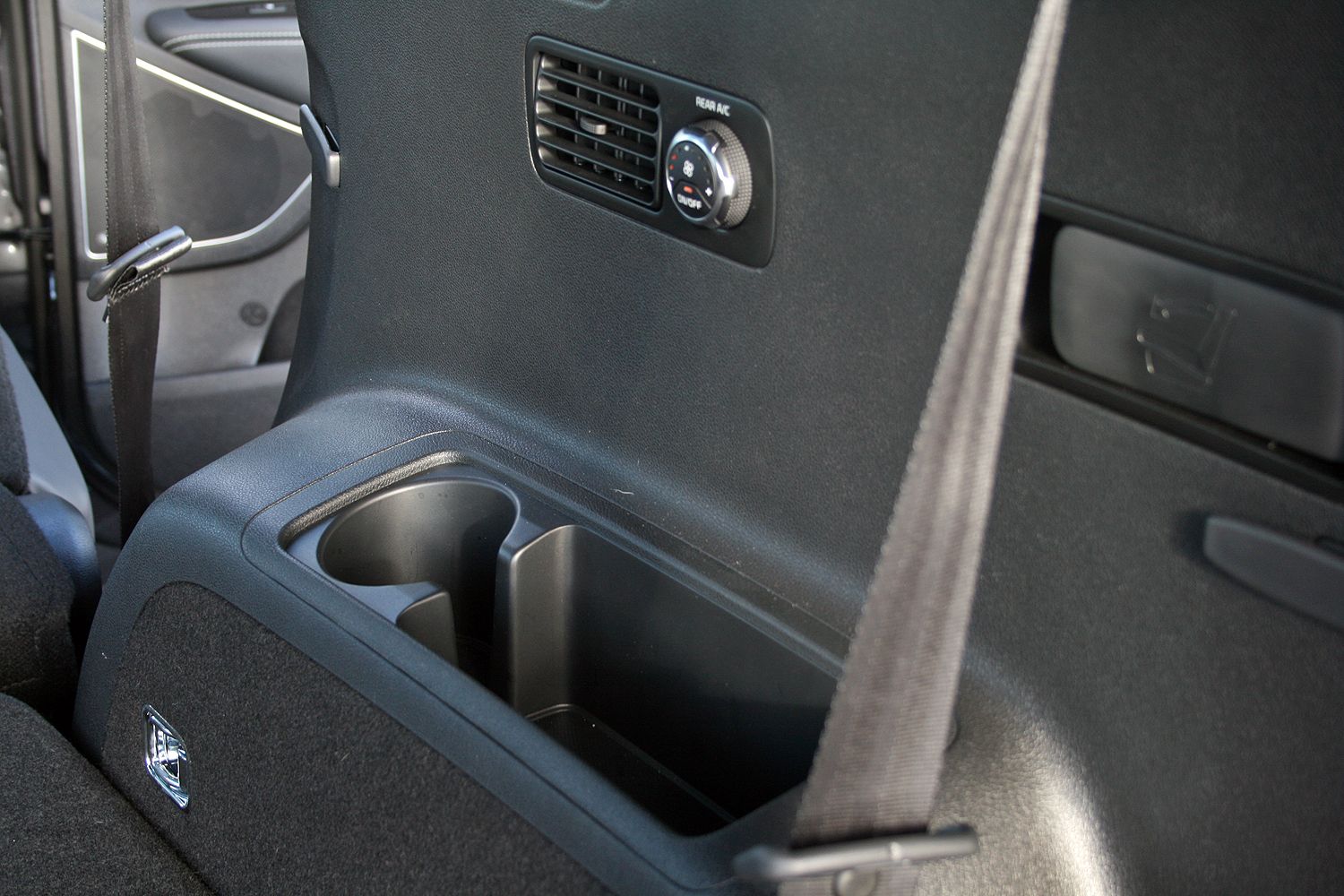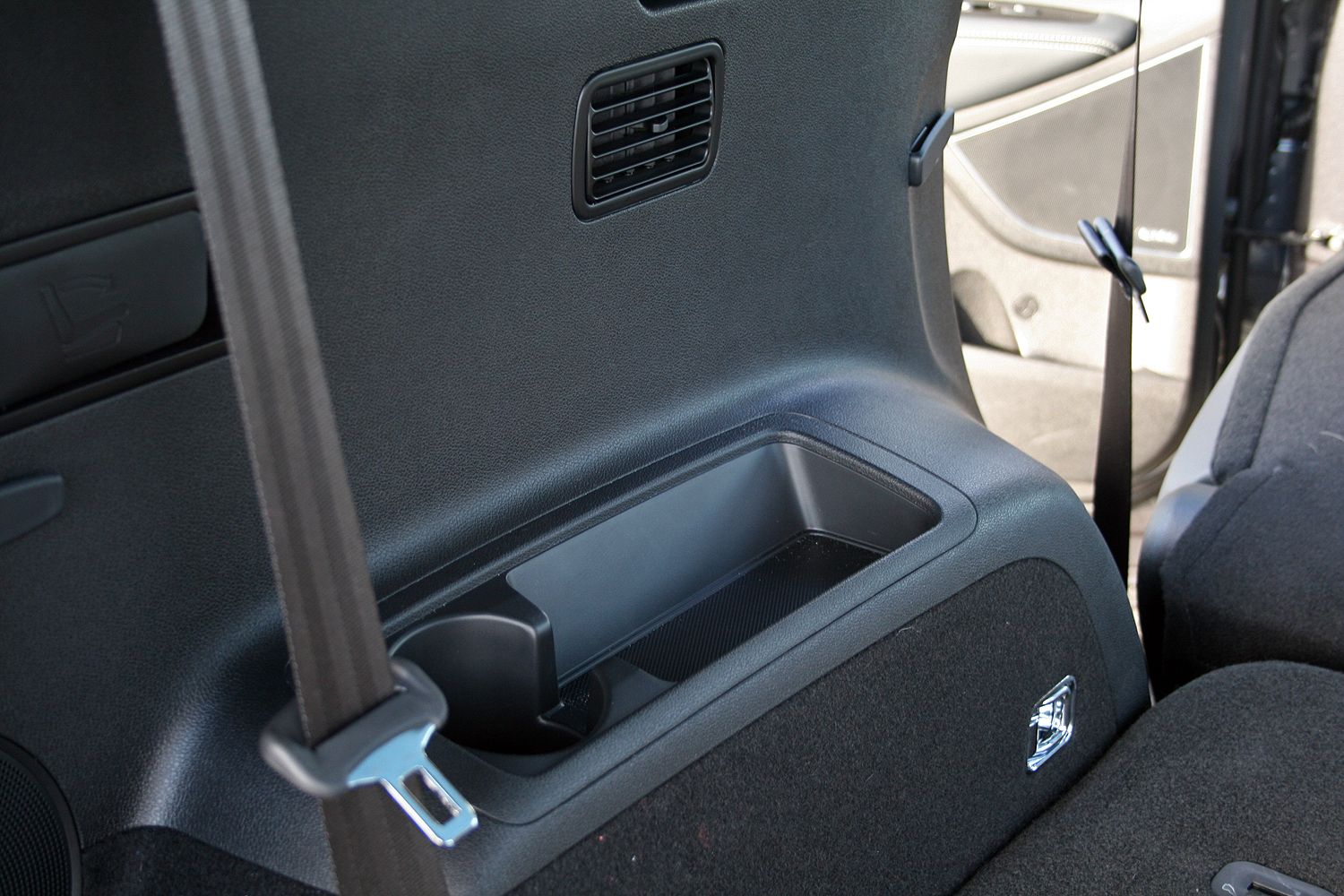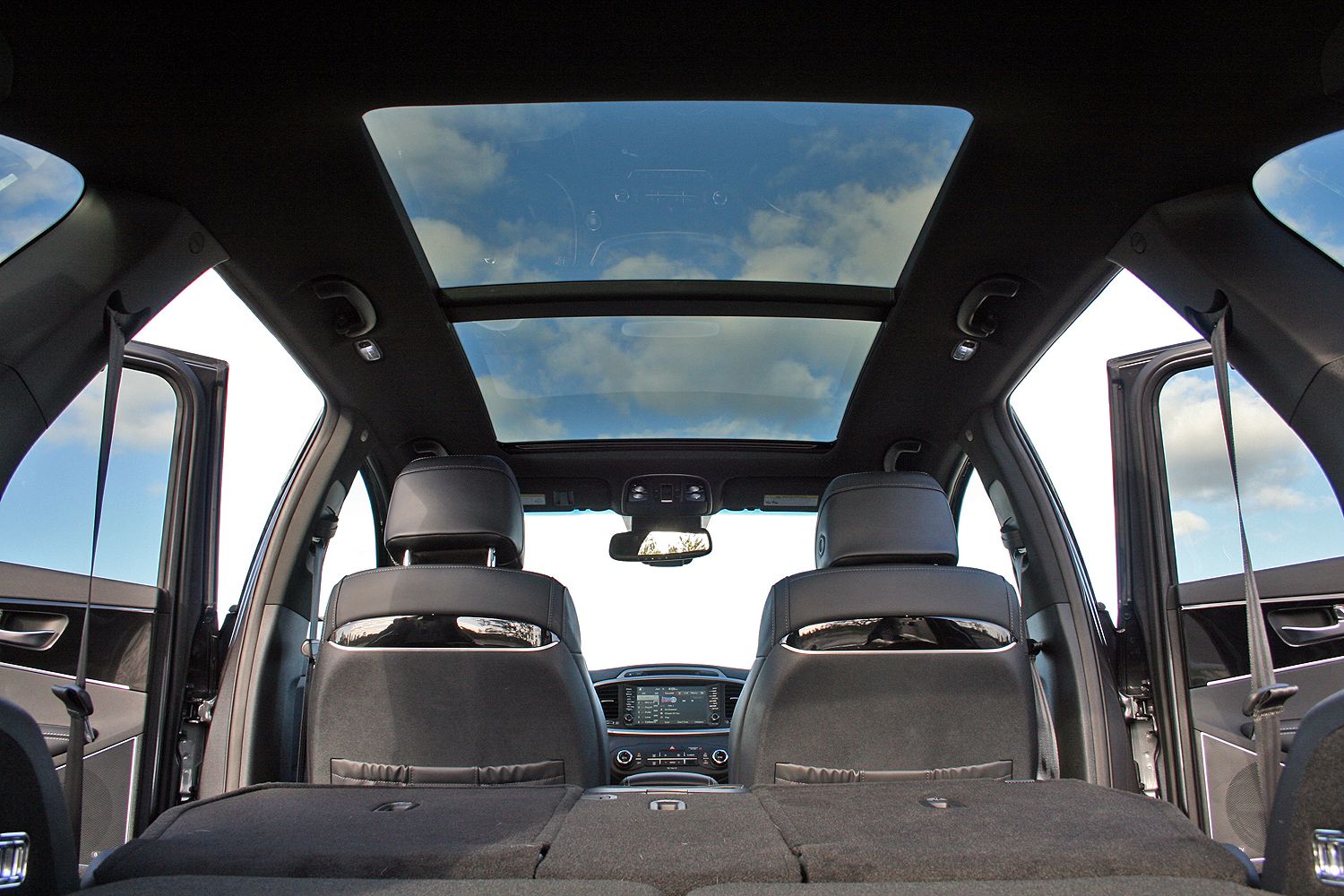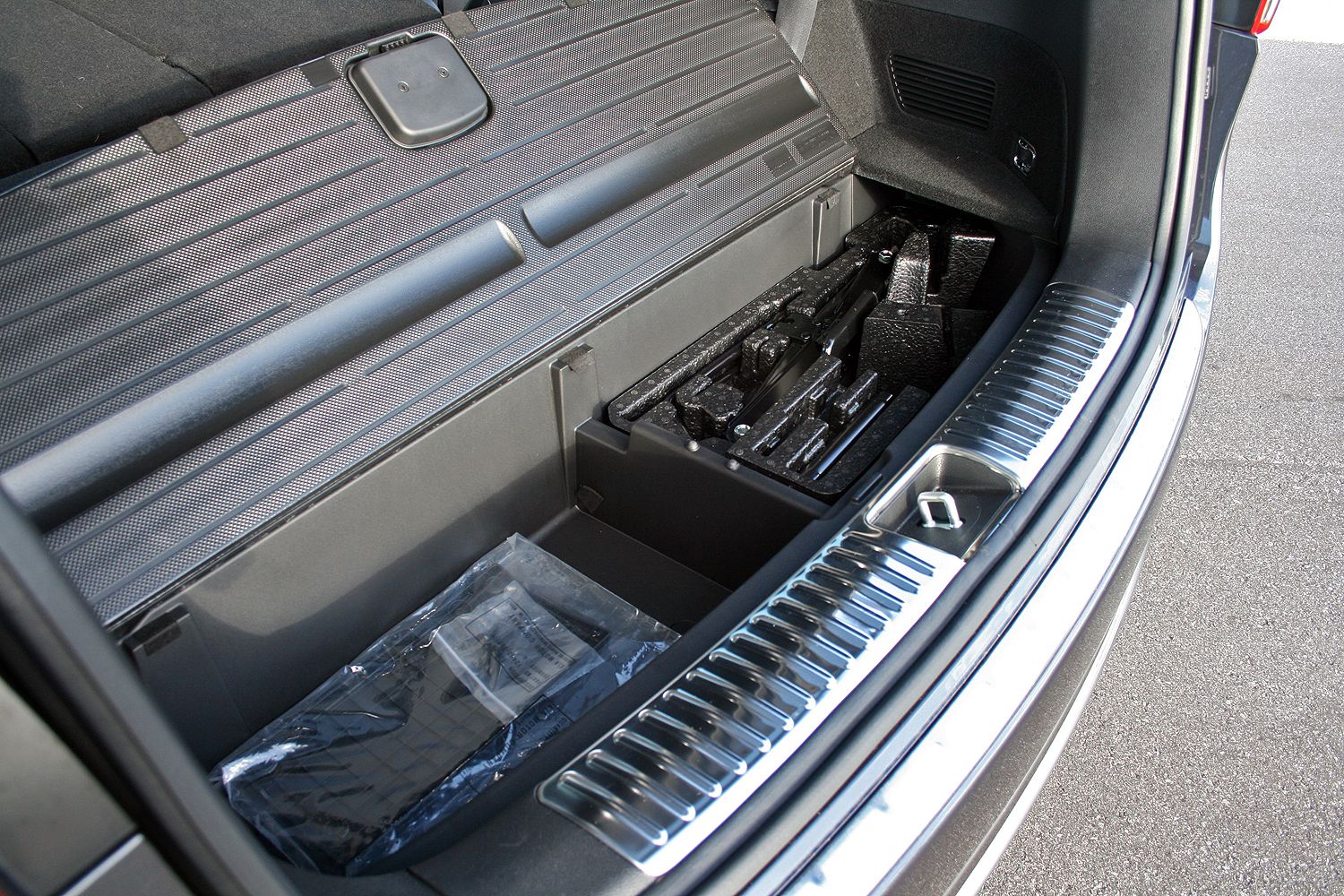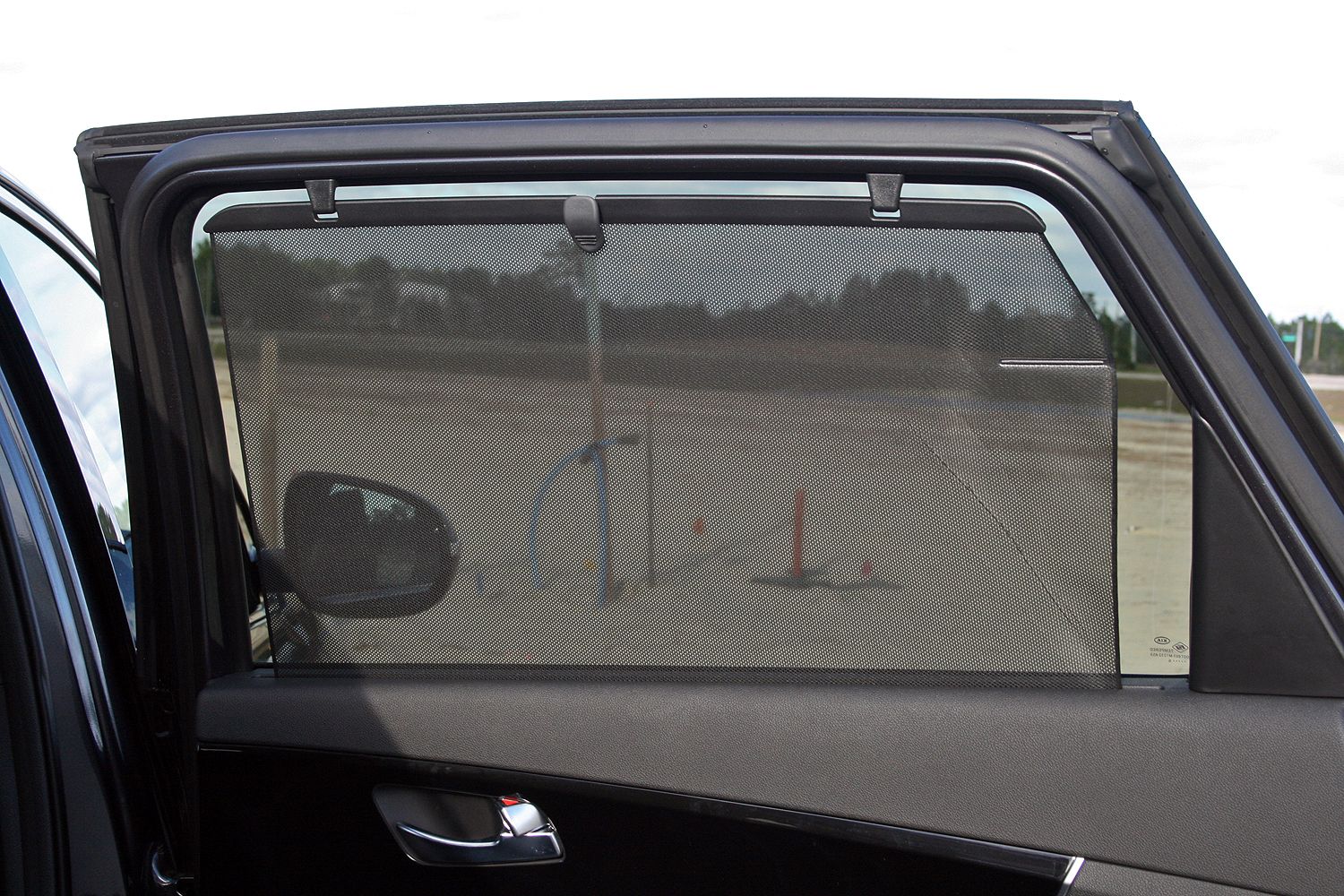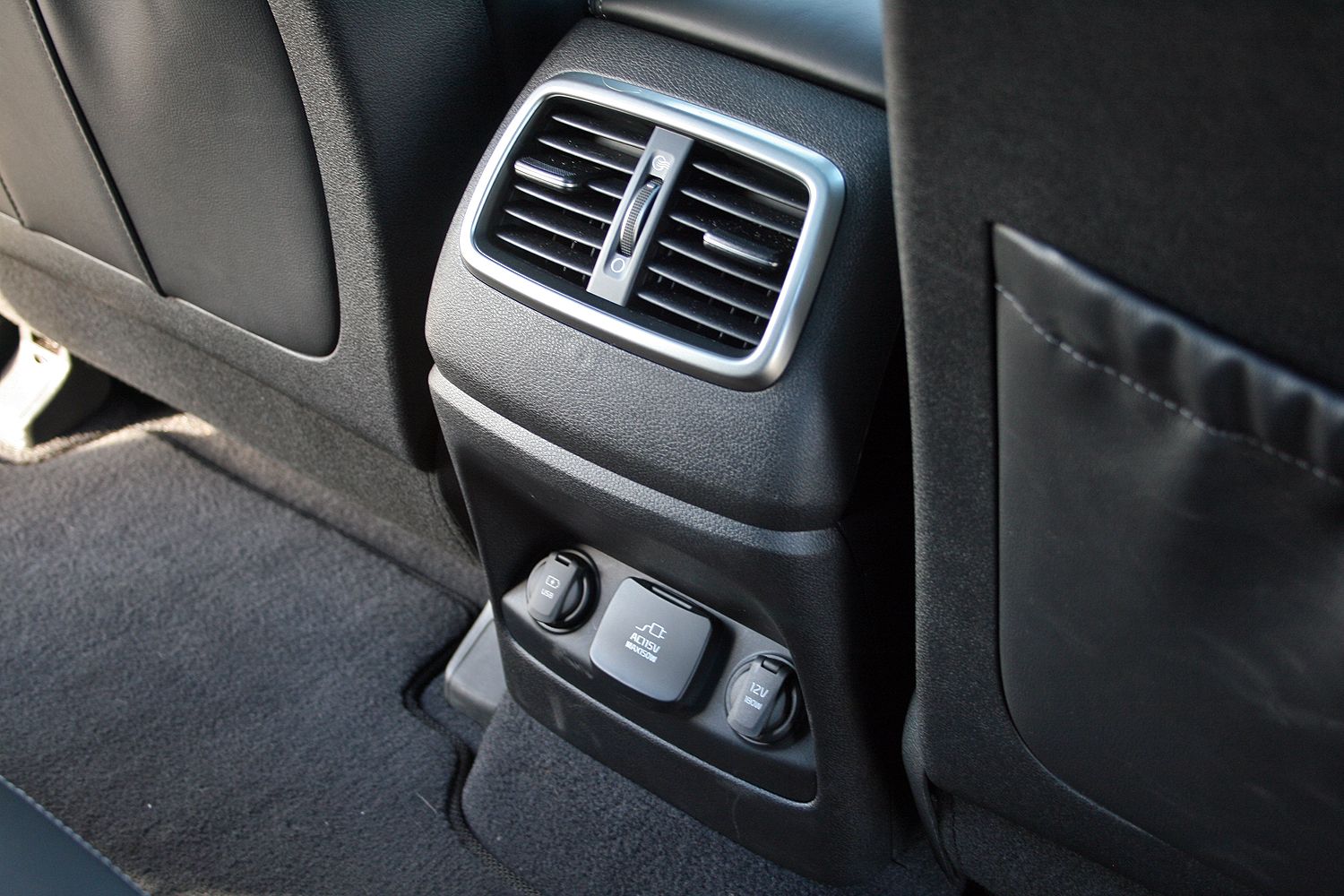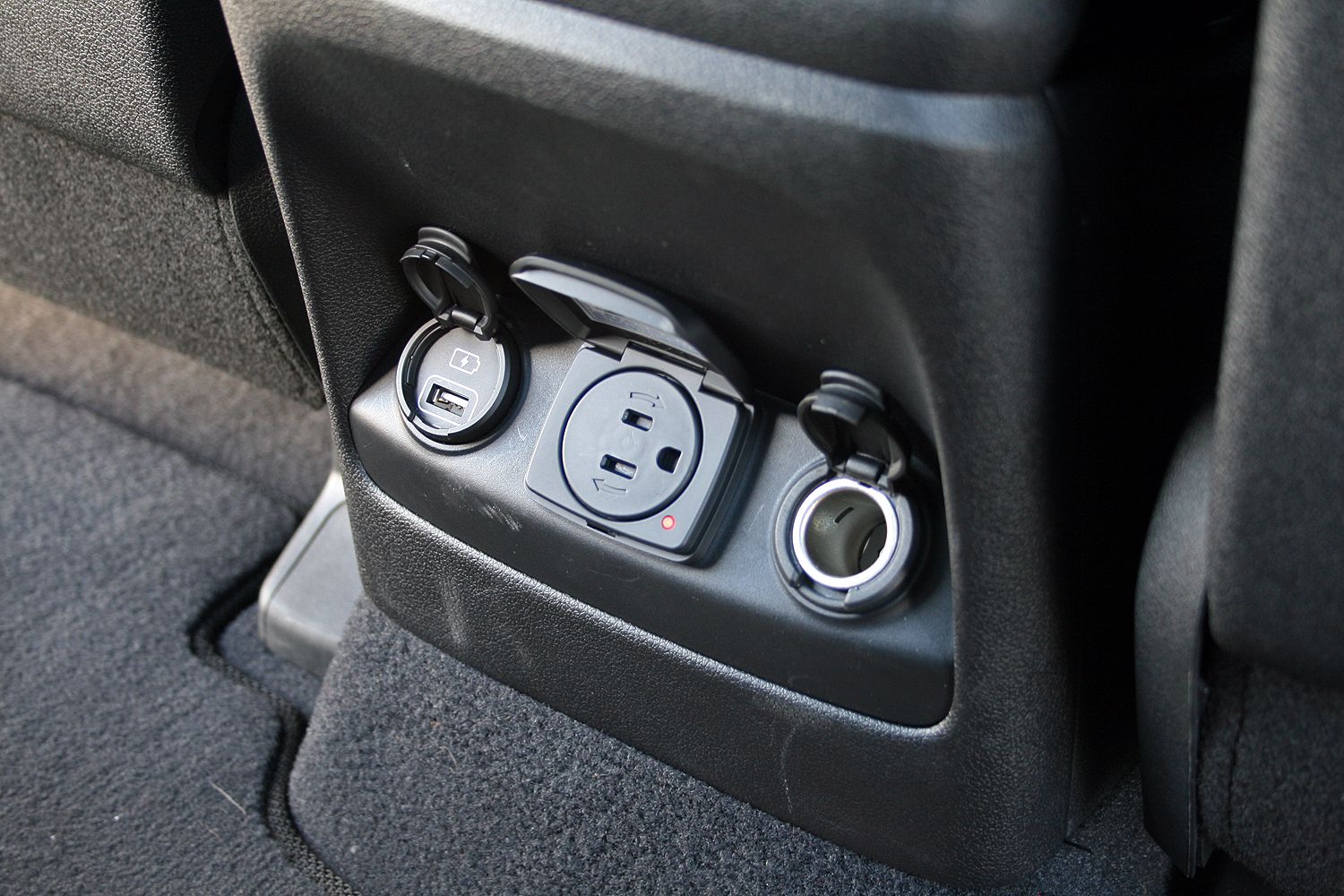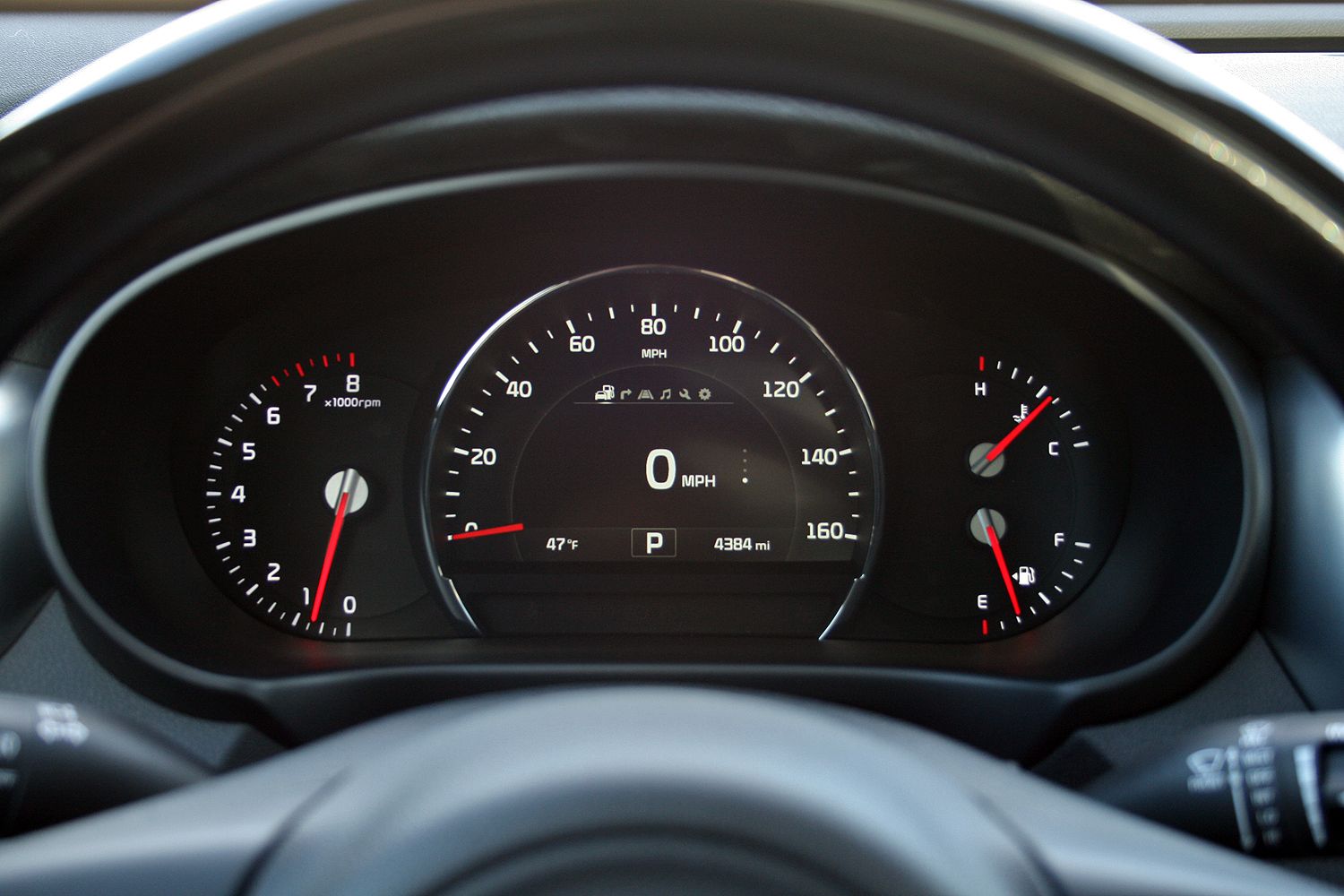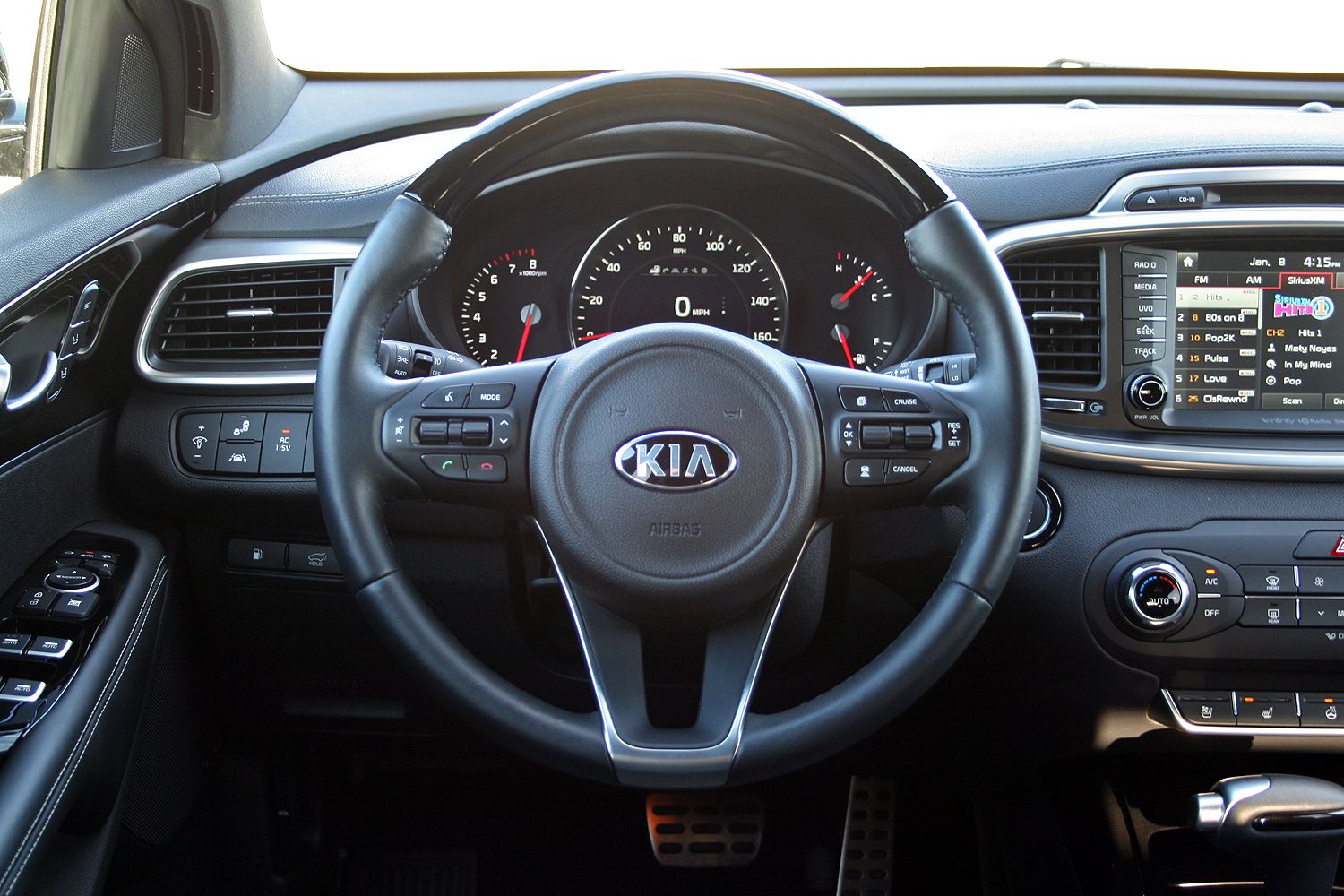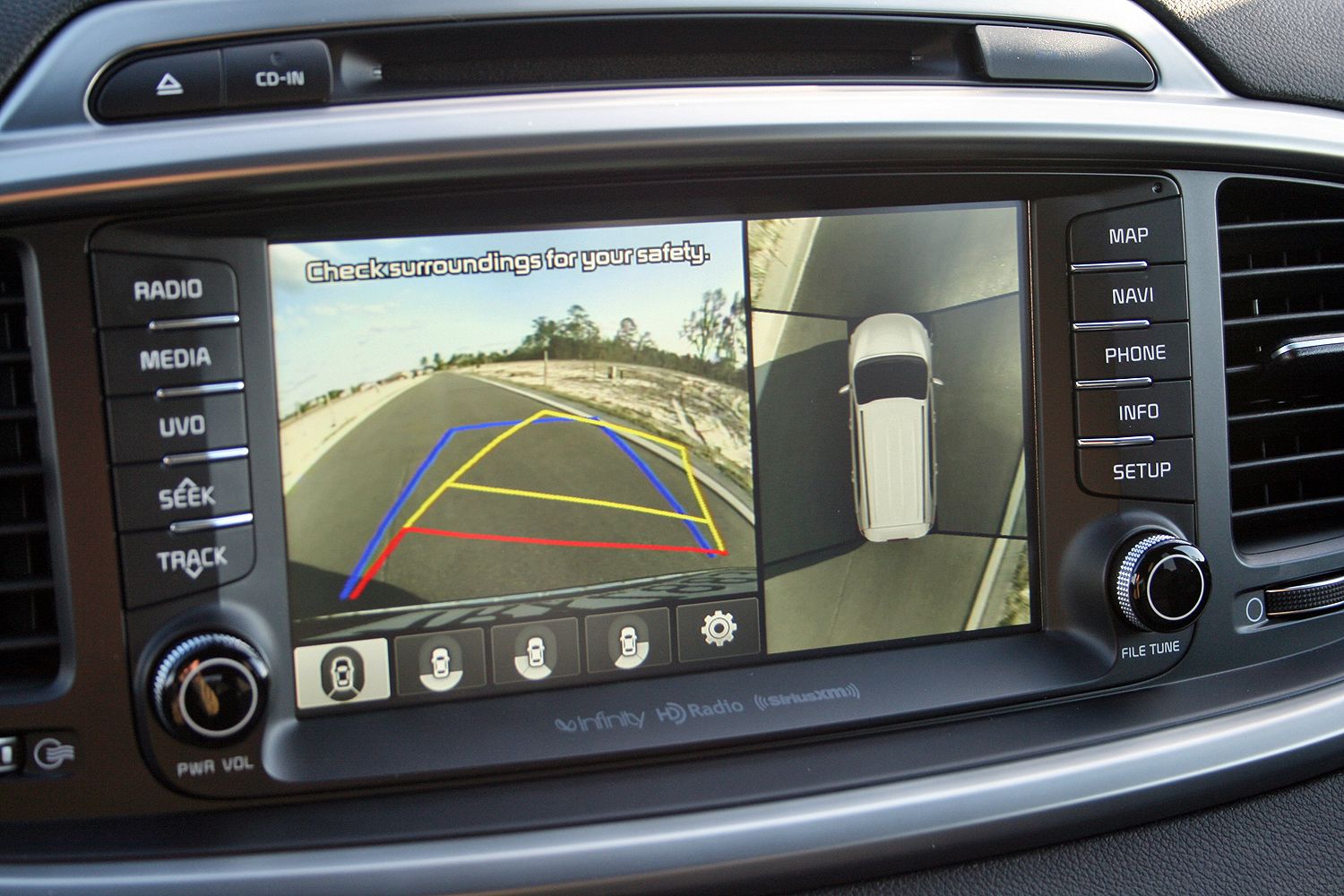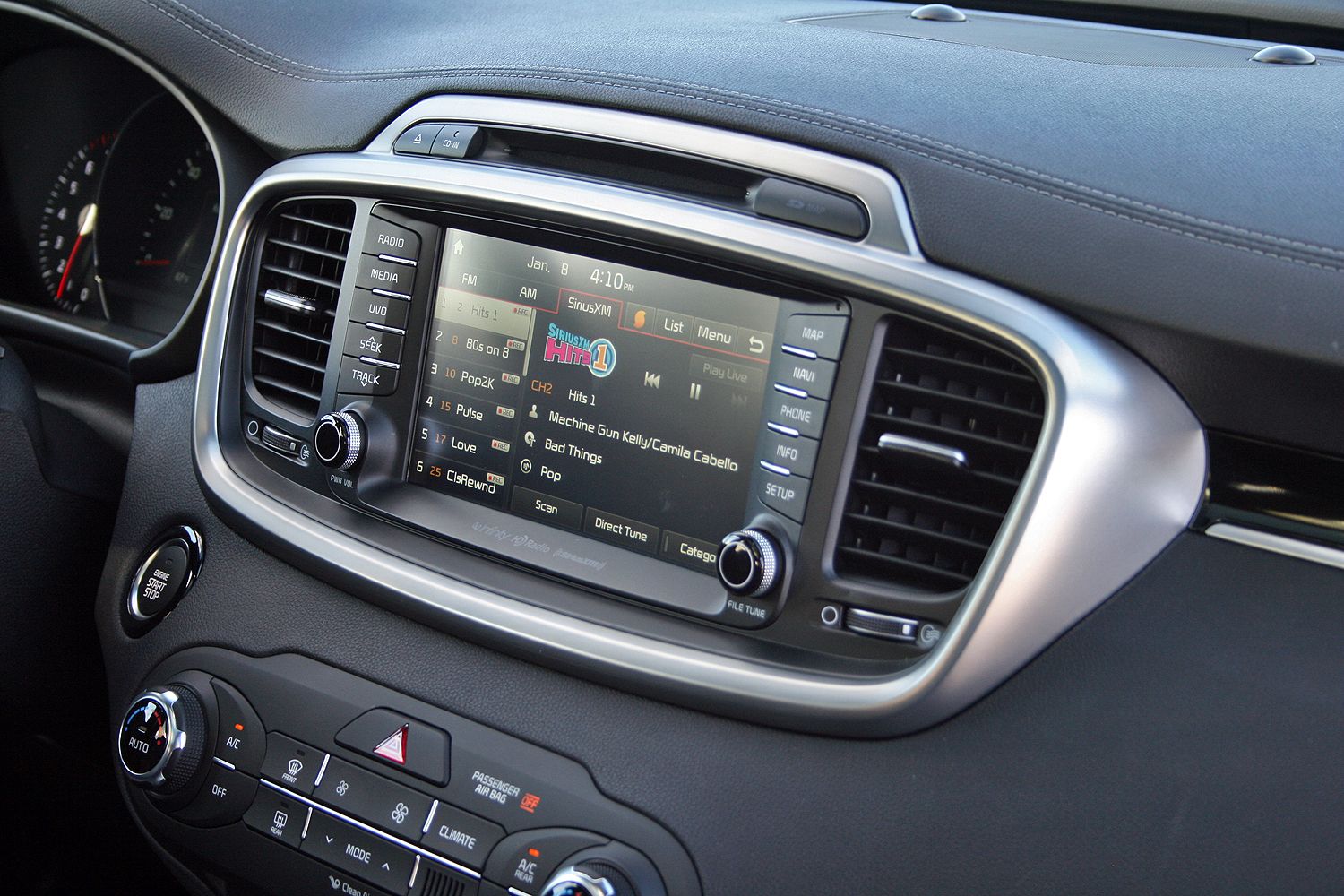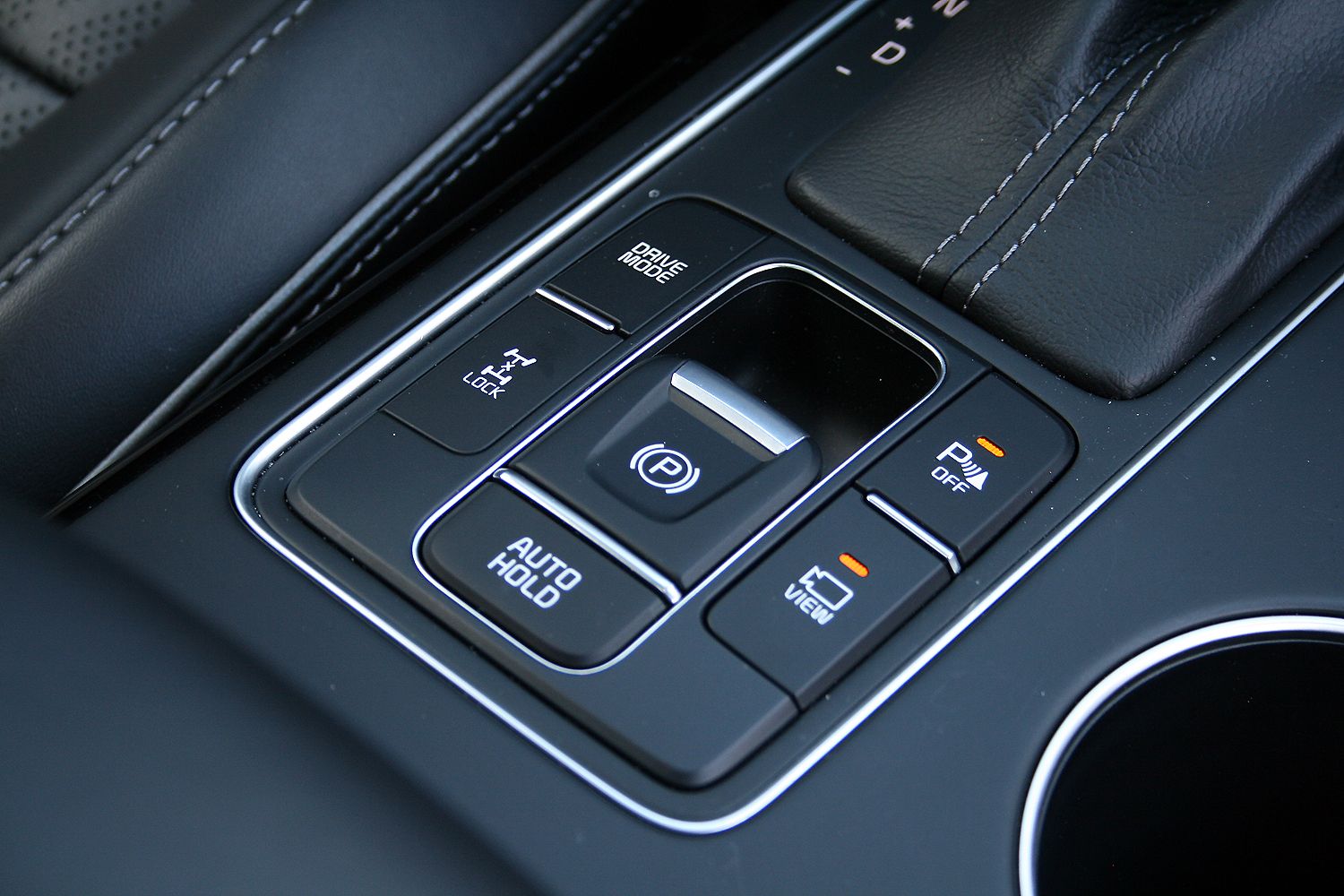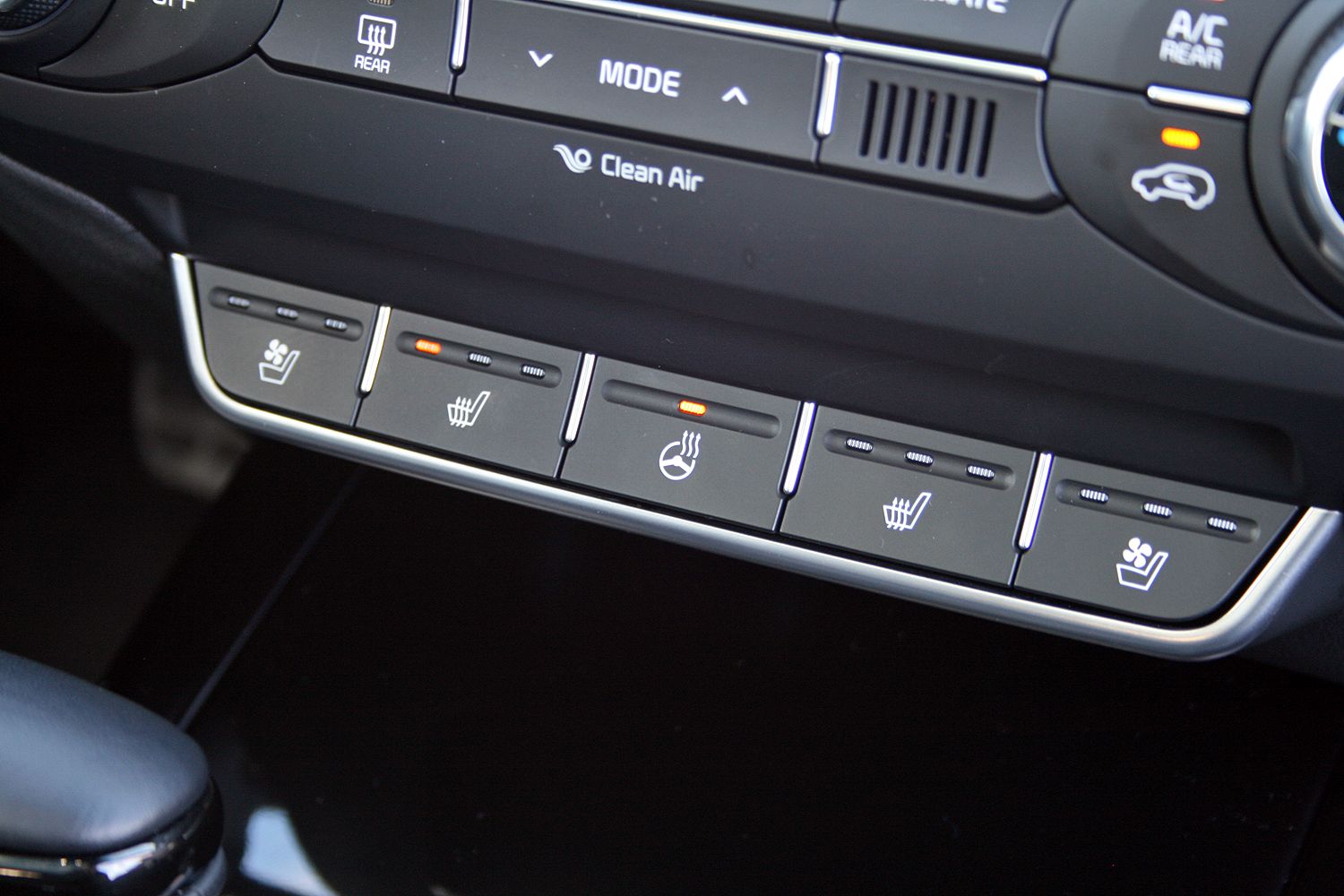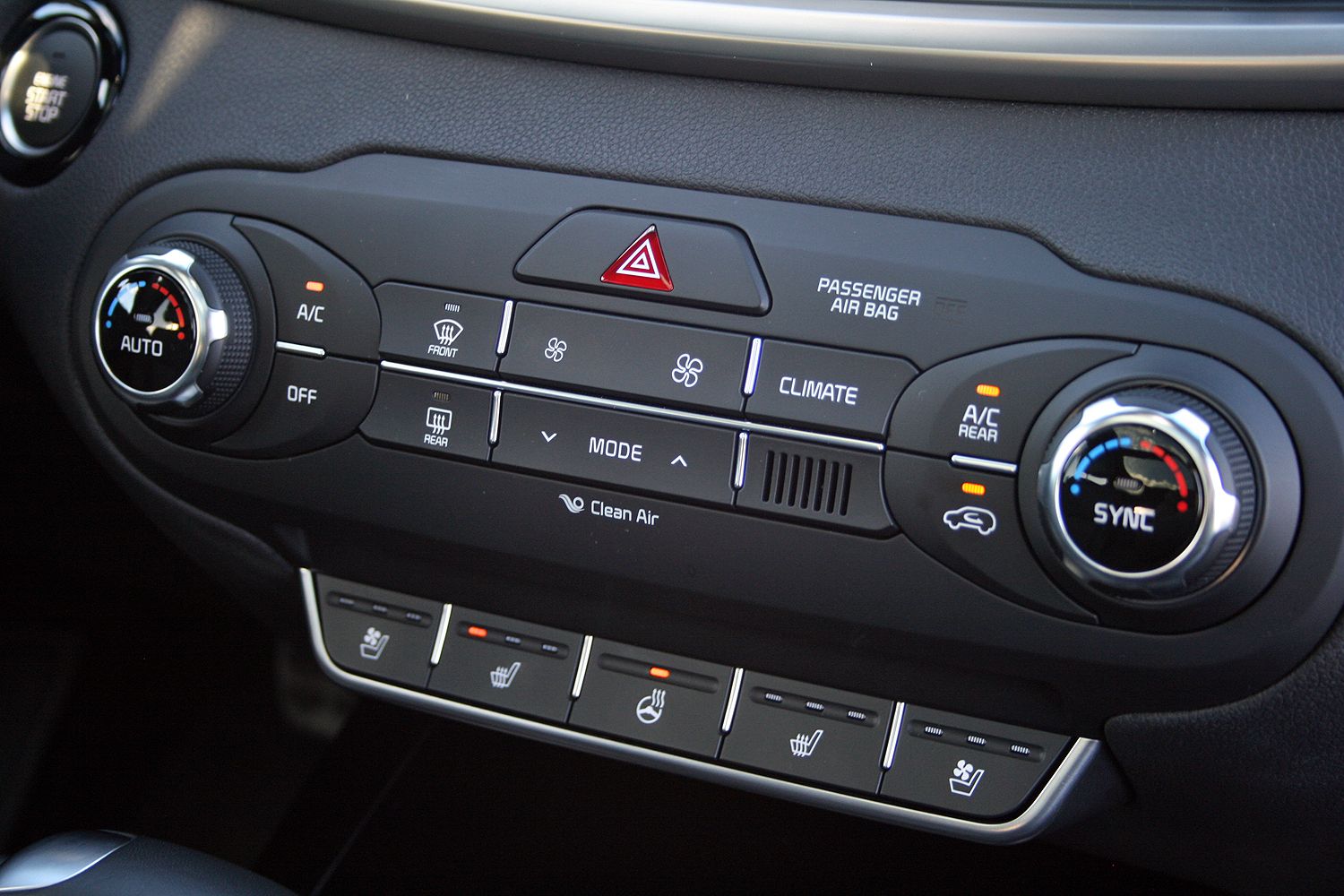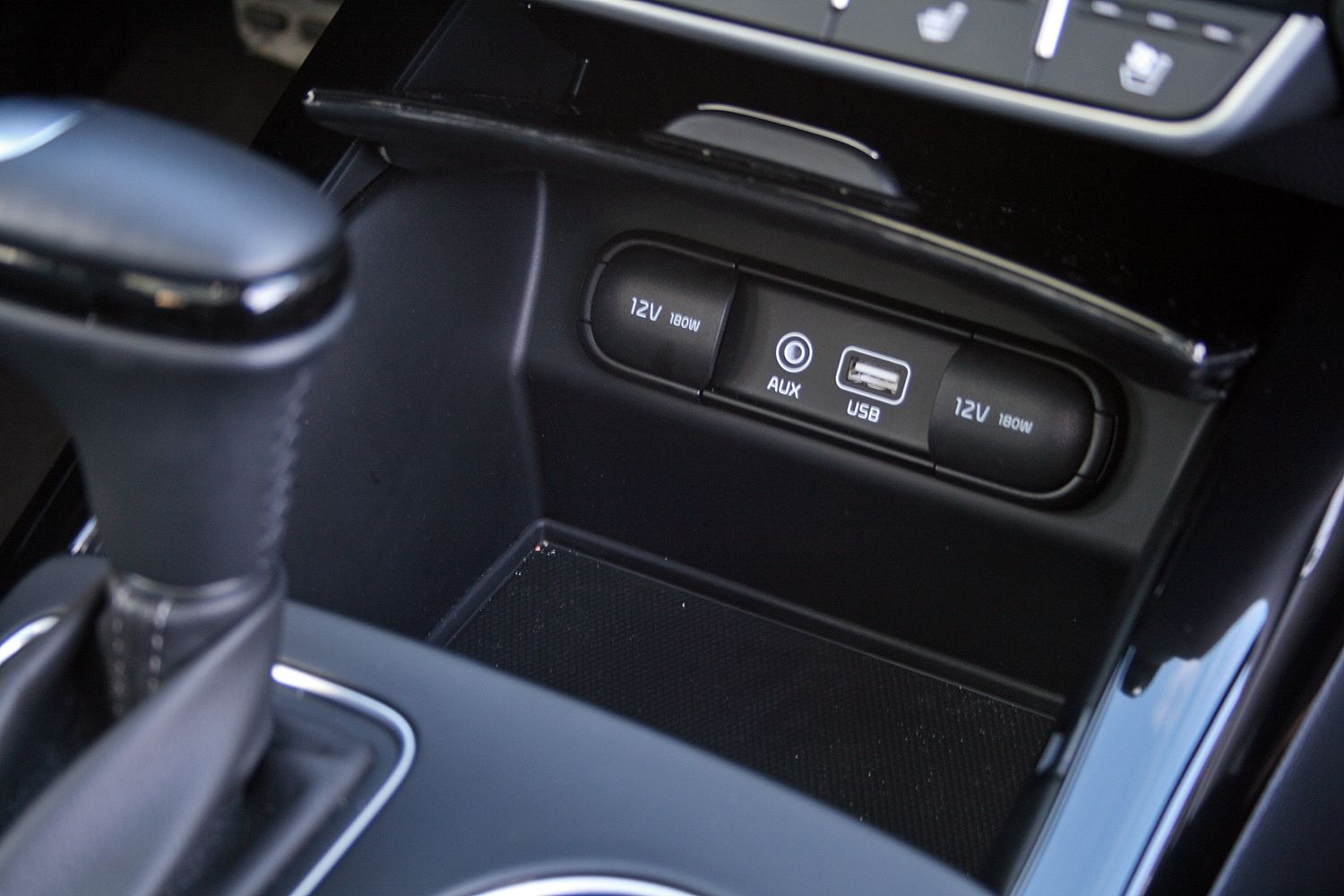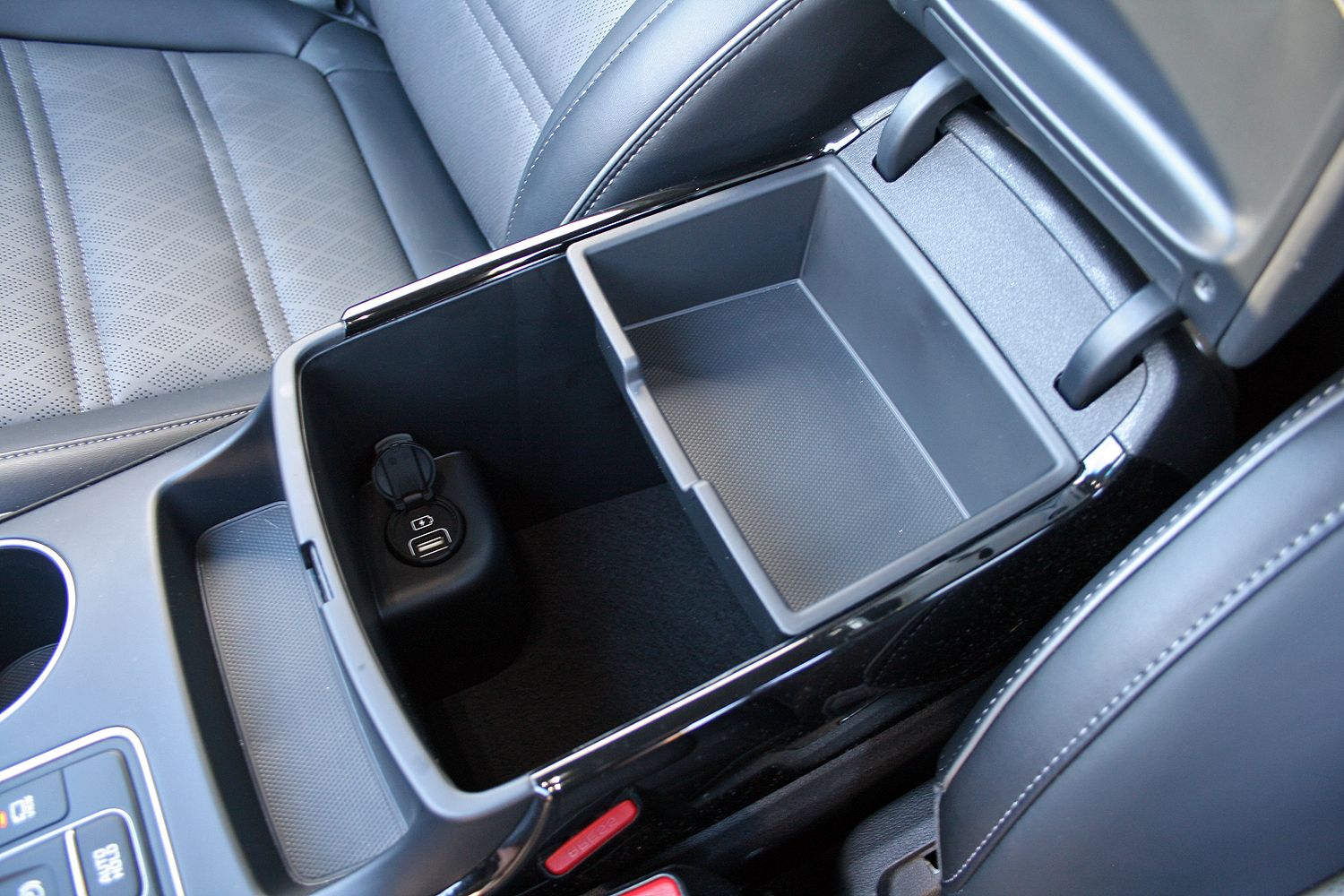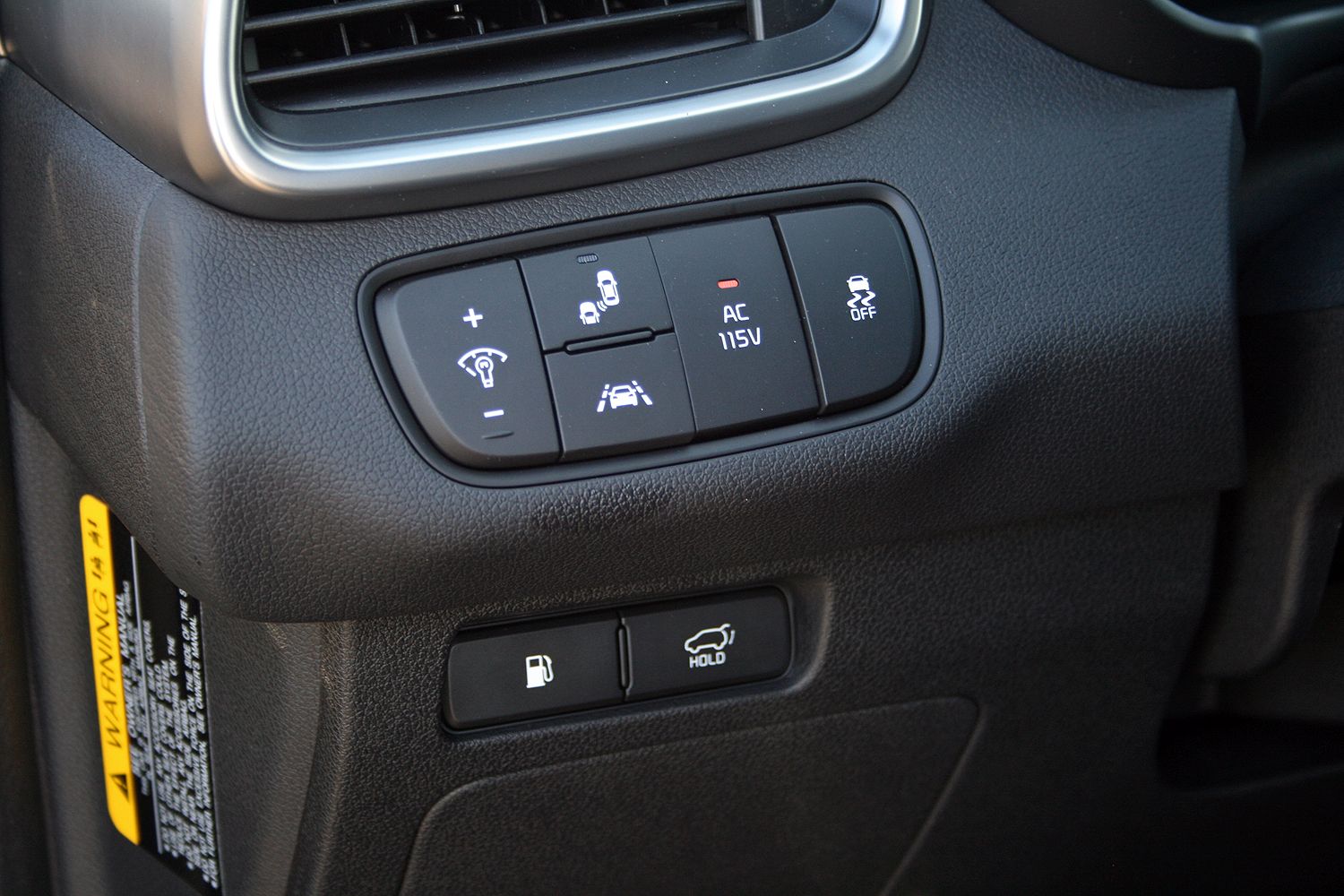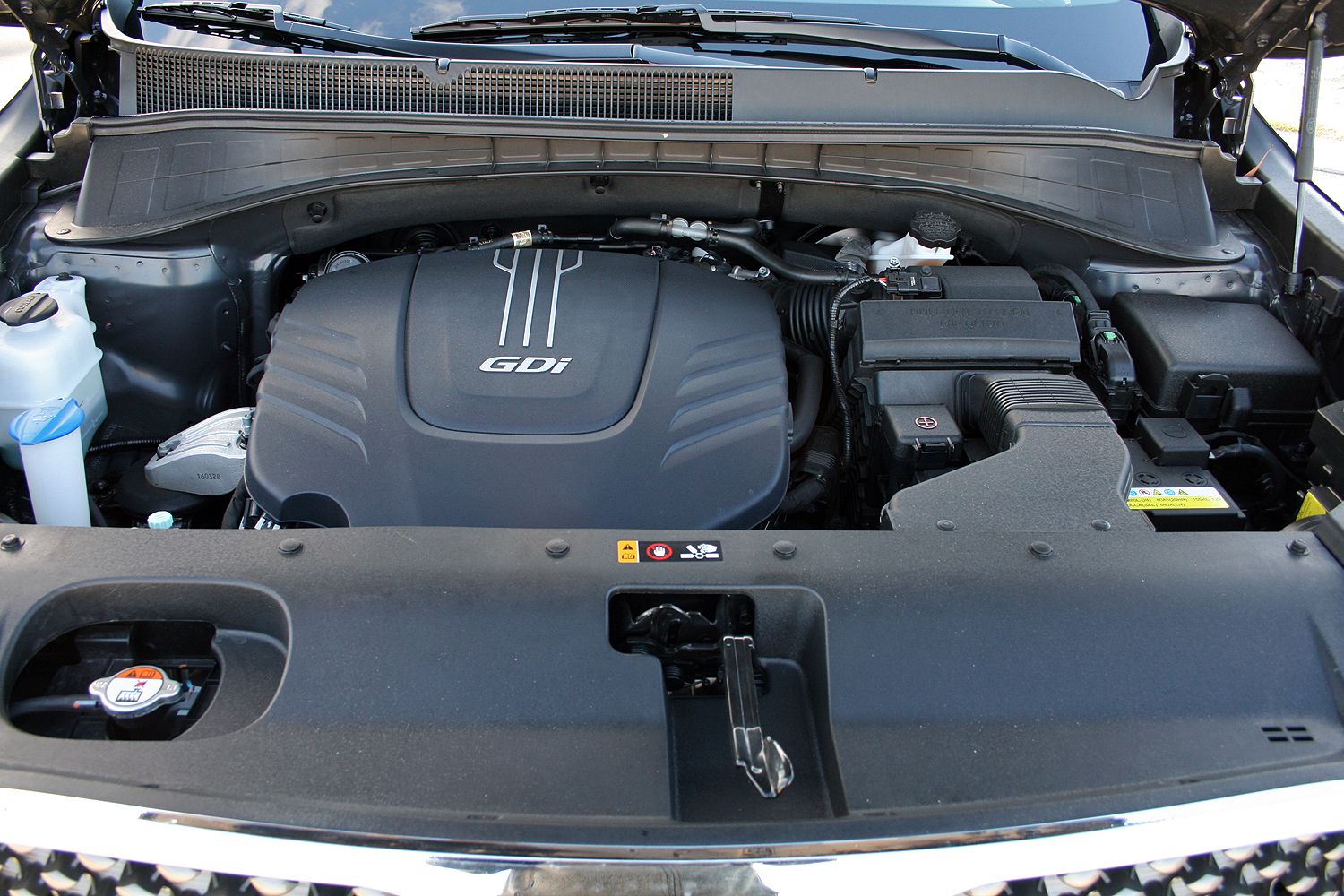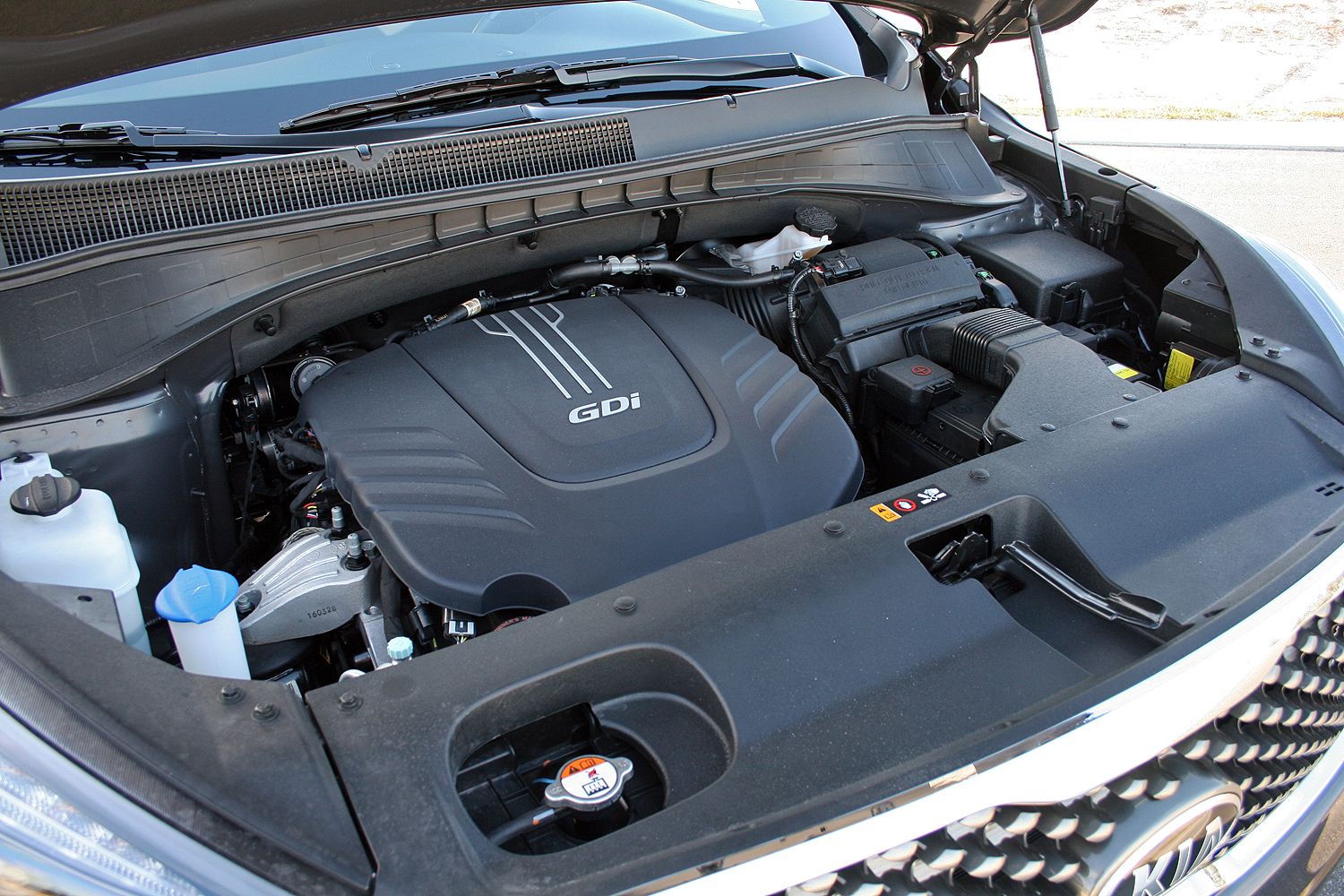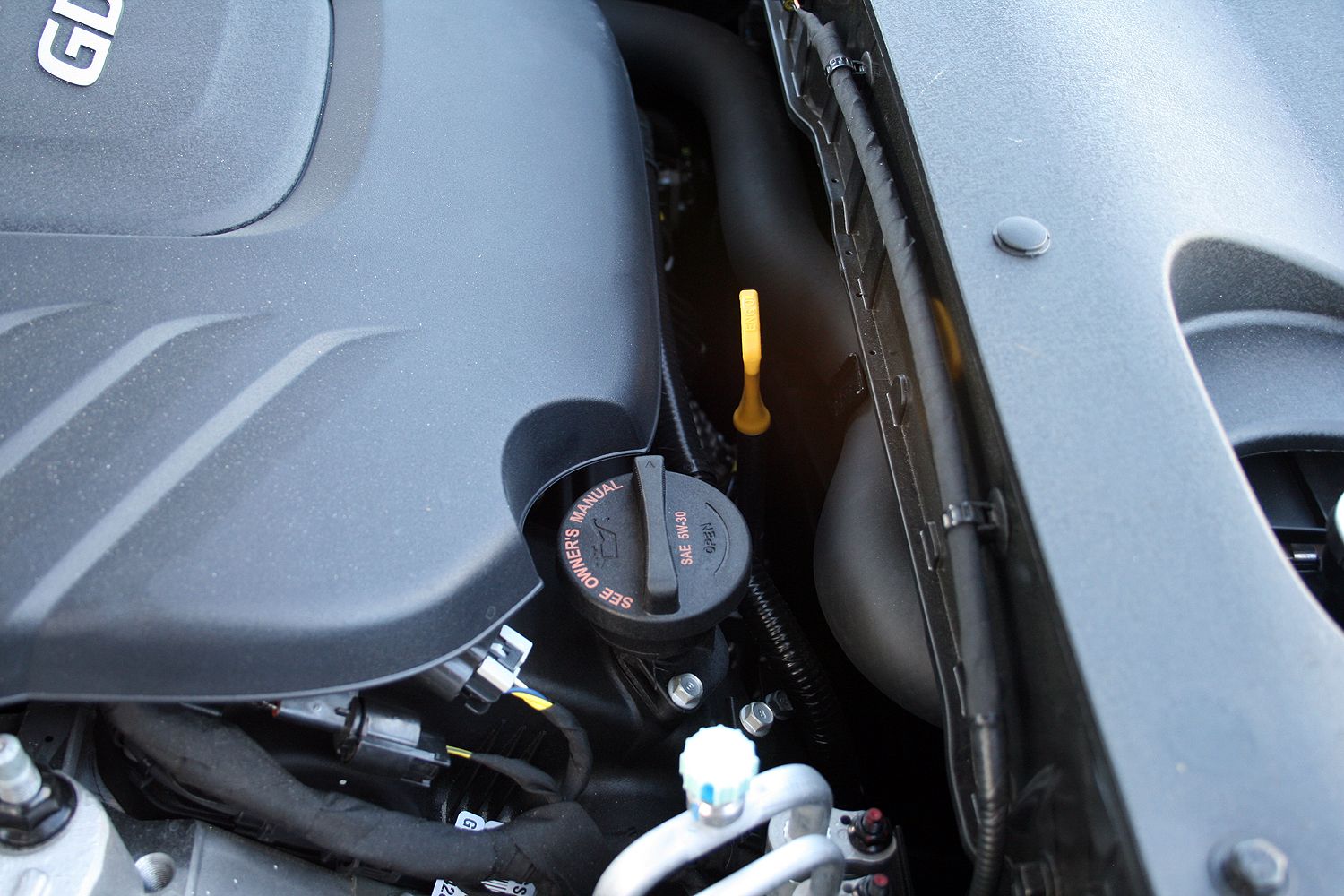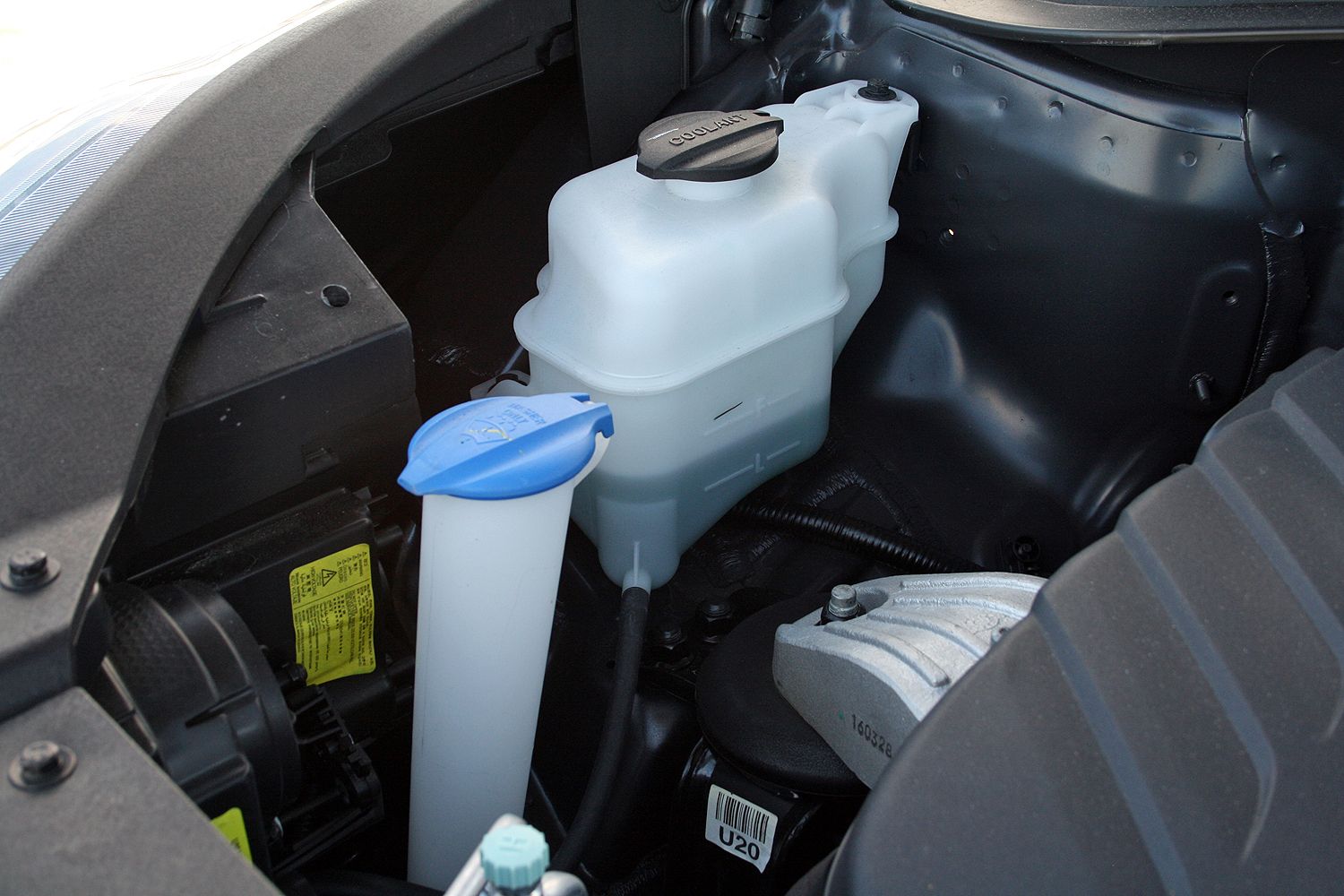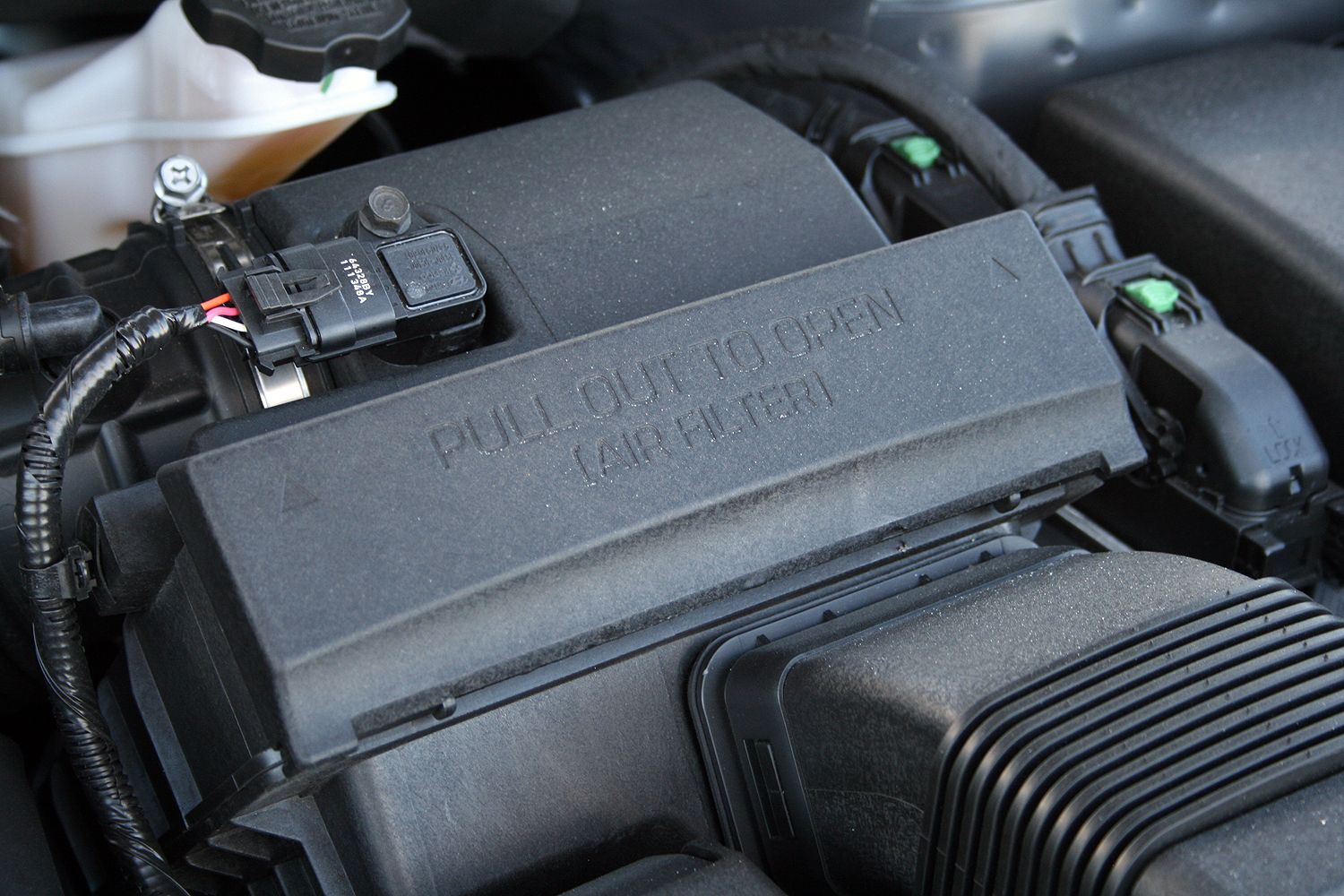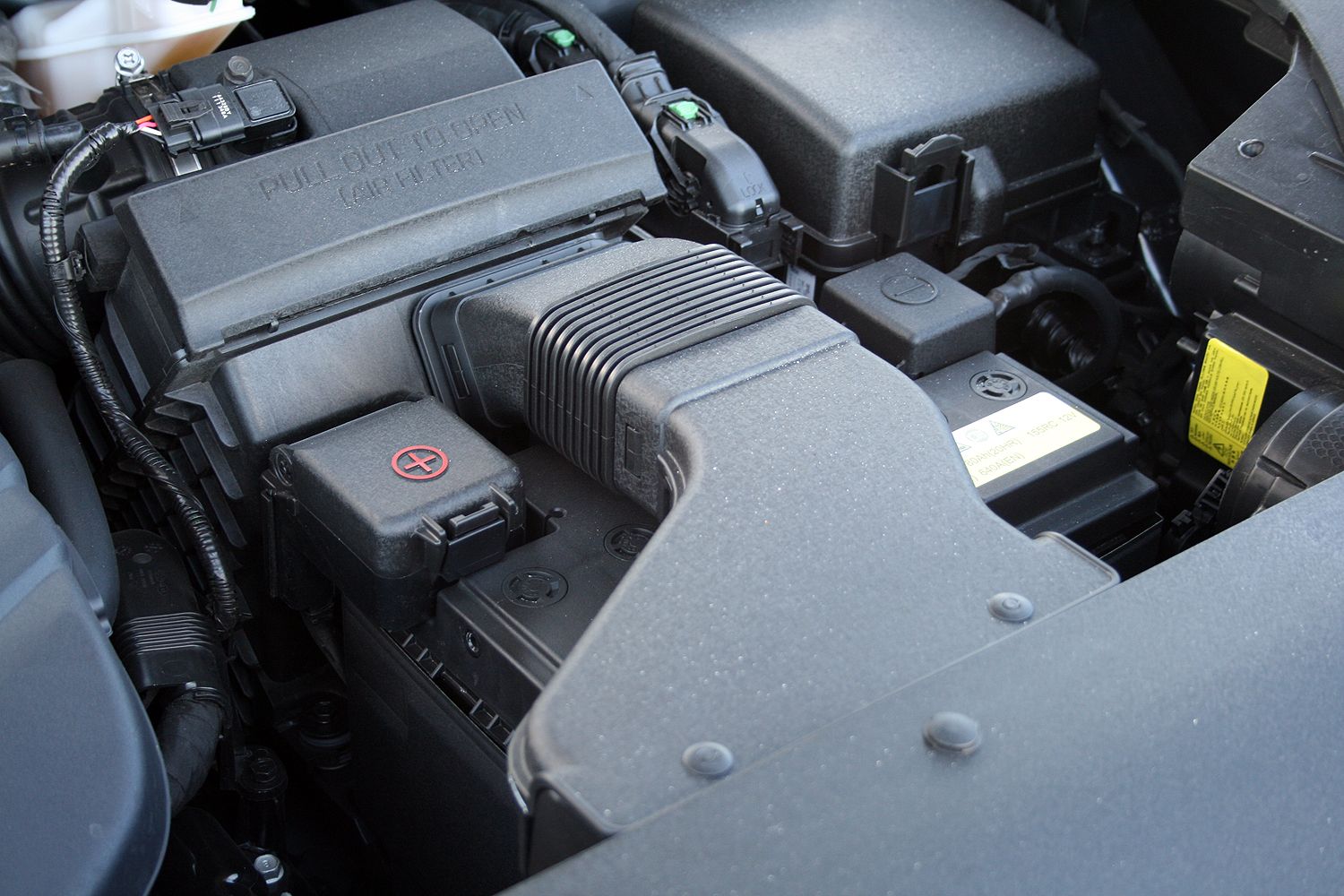It’s hard to believe the Kia Sorento has been around since 2002, but this body-on-frame SUV turned unibody crossover has gained a respectable foothold in the American market thanks to its growing size and continually improvement refinement with each generation. Kia last reworked the Sorento for the 2016 model year. This third-generation crossover now wears a handsome exterior with a surprisingly supple and spacious interior. A few minor changes happen for the 2017 model year, including the addition of automatic emergency braking and making the Technology Package and V-6 standard equipment in the range-topping SXL.
Kia sent me such a model to test for a week. It came loaded with just about every option available, including all-wheel drive and that 3.3-liter V-6. Also packed in back is the Sorento’s optional third row seat, which actually comes standard on the SXL. Prices have also increased for 2017, with the base trims seeing as little as $290 and a whopping $4,000 for the SXL. The huge price jump on the SXL is patricianly explained by the $2,500 Technology Package being made standard, as well as the V-6. AWD is now the SXL’s only major option, though several smaller accessories can be purchased.
The 2017 Sorento is positioned to compete in two vehicle categories and in a higher pricing bracket than most would expect. It can be stacked against the two-row Ford Flex or the spacious, three-row Dodge Durango. It can compete with the family-friendly and affordable Hyundai Santa Fe Sport or the middle-class Jeep Grand Cherokee. It all depends on how the Kia Sorento is optioned. But how well does the Sorento perform at all these tasks? That’s what we’re here to find out.
Continue reading for the full driven review.
2017 Kia Sorento SXL – Driven
- Make: Array
- Model: 2017 Kia Sorento SXL – Driven
- Engine/Motor: V6
- Horsepower: 290 @ 6400
- Torque: 252 @ 5300
- Transmission: Six-speed Automatic
- [do not use] Vehicle Model: Array
Video Review
Exterior
Initial impressions of the 2017 Kia Sorento’s looks are surprising. Kia has done an amazing job at turning what was a dull vehicle into a classy crossover. Much of that can be attributed to its front-end design and detailing. The “Tiger Nose” grille with its chrome mesh leads the way, with swiveling HID headlights flanking either side. Piano black trim helps dress up the lower grille and surrounds the fog lights. A faux chrome skid plate with hex bolts helps give the soft Sorento a harder appeal. However, it’s the four-pod flog lights that really grabs the attention. And not only do they bring interest, they are rather bright and genuinely help improve visibility on dark stretches of fog-covered roads.
Other brightwork includes the 19-inch chrome wheels, chrome trim along the door bottoms and handles, chrome around the side windows and roof rack, and another faux chrome skid plate along the rear bumper. I have to admit the chrome wheels look a bit dated, especially in today’s market with blacked-out and alloy-colored wheels. Then again, some folks might appreciate the old-school approach.
The Sorento can be accused of a half-hearted attempt to look like an SUV. It does feature finder flares, but they are painted. It does feature skid plates, but they aren’t substantial. It does appear to have moderately useful ground clearance, though not any more than any other crossover on the market. But in reality, that’s just fine. Sorento buyers are hard-core off-roaders or the type to install aftermarket lift kits – these are the folks at the afterschool PTO meeting or Saturday soccer meet. The Kia doesn’t have to be anything more than a seven-passenger crossover. It just has to appeal to the SUV-crazed market. In my eyes, it does that well.
Exterior Dimensions
The three-row crossover segment is a popular place these days. Just about every automaker has something here, but there are a few stalwarts that define the segment. Leading that list is the Honda Pilot. It’s regarded by many to be one of the best crossovers on the market. That’s thanks to its handsome styling, spacious interior, and functional powertrain.
On the outside, the Honda Pilot offers a grown-up appearance that’s reserved and well-mannered. Splashes of chrome help brighten its look, while black trim along the wheel arches and rocker panels help give it a rugged stance. Speaking for myself, I really appreciate the Pilot’s two-bar chrome grille and how it flows into the headlights. The chrome trim around the side windows is another nice touch. Despite the plastic along the lower edges, the Pilot isn’t’ trying to impersonate a Jeep Wrangler or Chevrolet Tahoe Z71.
The other stalwart in this segment is the venerable Toyota Highlander. The Highlander has been around in its current form since the 2014 model year, so Toyota has given it a sporty mid-cycle refresh for 2017. The new look includes a A-frame grille with only a small sliver of body-colored trim separating the upper and lower grille sections. The look makes the Highlander seem more planted, or since it’s a Toyota, “grounded to the ground.” New headlights and LED taillights, along with new wheel designs, help make the Toyota more appealing to those wanting something with a more athletic feel.
The Competition
| Honda Pilot | Toyota Highlander | Kia Sorento | |
| Headroom front/middle/rear (Inches) | 111.0 | 109.8 | 109.4 |
| Legroom front/middle/rear (Inches) | 194.5 | 192.5 | 187.4 |
| Shoulder Room front/middle/rear (Inches) | 69.8 | 68.1 | 66.3 |
| Hiproom (ront/middle/rear (Inches) | 78.6 | 75.8 | 74.4 |
Drivetrain
I feel like I always remind my readers just how far Kia has come in the last 15 years, especially in interior quality. Since I just did that again, I can skip the part where I say I’m impressed with the Sorento’s fit and finish, its simple yet interesting dash layout, and how everything in placed in an ergonomic and intuitive position. Saying anything more would just be… repetitive.
However, I will say I’m impressed with the metallic finishes throughout the cabin. The satin chrome pieces add a touch of brightness and class. They don’t feel cheap; In fact, the material feels like real metal. I really enjoyed using the simple yet functional HVAC and seat heater controls. It doesn’t get better than this in terms of ease-of-use. I also really liked how most of the drivetrain-related controls are positioned behind the gear shifter. I also liked how the UVO3 system is familiar to anyone who’s sat in a Kia or Hyundai in the last couple of years, while still having the latest features like Apple CarPlay and Android Auto. For those who don’t want to connect their phones, the infotainment system already comes with navigation.
Cubbyholes and storage spots are bountiful. Ahead of the shifter is a covers storage container complete with two 12-volt power ports, a USB port, and an AUX input jack. Under the center armrest lies another cubby spot, with another USB port and a small tray for random items. Large door pockets are perfect for taller drinks and other items.
Of course, with this being a family-friendly crossover, much of the designers’ focus was concentrated on the rear seats. Kia did a great job at staying competitive back here. The second row seats provide ample legroom, headroom, and a wide-opening door for easy entry. HVAC vents and controls allow for rear passengers to adjust temperatures to their own liking. Interestingly, it’s the third row passenger with the HVAC controls with independent fan speed selection. The second row relies on the front seat for fan speed.
Access to the third row is only available on the passenger side of the Sorento. Kia figured that curbside access is good enough, so only the smaller portion of the 40/60 folding second row bench tilts and slides forward. The reasoning makes sense, but Kia is the only automaker to my knowledge that skips on offering driver-side access to the third row. Once in the third row, the two passengers have a decent amount of space, especially with the second row slid forward along its tracks. Cup holders and storage bins atop the wheel wells are present. All told, the rear two rows inside the Kia Sorento are accommodating and comfortable.
When it comes time to haul stuff rather than people, the two rear rows easily fold flat. The third row uses straps to fold the headrest and release the seatback latch. They fold effortlessly forward. The same is true for the second row thanks to a single lever along the bottom of the seat support. Pulling the lever up drops the seatbacks forward. The resulting space offers 73.5 cubic-feet of storage. Even with the third row in place, there is 11.3 cubic-feet of room. That’s enough for groceries or a gym bag.
Other handy or handsome features include the huge panoramic moonroof. Its entire front portion opens, allowing for an open-air experience for the front row. There are window shades for the second row. The second row also gets its own UBS port, a 12-volt charging port, and a 110-volt household plug, complete with a ground prong. The infotainment system includes a 360-degree camera system that’s invaluable for tight maneuvering and ensuring there are no toys in the way when backing out of the driveway.
All told, the 2017 Kia Sorento’s interior is a well-designed and comfortable place to ride. The only problem is its rivals are highly competitive and offer most, if not all or more options. Crossovers are hot these days, and nearly every automaker is making one.
The Competition
One of the Honda Pilot’s best features is its well-conceived interior. There’s room for eight thanks to a 2+3+3 seating configuration. The Pilot is available with second-row captain’s chairs, however, allowing for easier access to the third row and more adult-friendly seating in the second row. That drops the passenger count down to seven. It should be noted that the third row does have seating for three, but putting three across should only be reserved for kids. Two adults should fit just fine, though.
The front row has very pleasant accommodations. A rather functional center console allows the storage for random items. I’ve even been able to put a second-generation iPad with an OtterBox case in here. Triple zone climate controls let the driver front passenger, and rear passengers to choose their own temperature setting. Front fan speed is independent of rear fan speed, too. Honda’s push-button gear shifter is present, and is simpler to use that some might think. As for rear cargo room, the Pilot has 82.1 cubic-feet with the two rear rows folded flat.
As for the Toyota Highlander, it offers a bit more width for third row passengers. Yep, The Highlander also has a 2+3+3 seating configuration, and like the Pilot, can be had with second-row captains chairs. A clever folding tray between the captain’s chairs offers storage space and two cup holders. The center console between the front two seats offers even more room than the Pilot’s. Tri-zone climate controls are present, as is Toyota’s Entune infotainment system. The Highlander also has a useful shelf under the dashboard for random items and cell phones. With the rear seats folded, the Highlander has 83.7 cubic-feet of cargo room.
| Honda Pilot | Toyota Highlander | Kia Sorento | |||
| Honda Pilot | Toyota Highlander | Toyota Highlander | 40.1/40.2/38.9 | 40.7/39.9/35.9 | 39.5/39.3/36.3 |
| Engine | 40.9/38.4/31.9 | 44.2/38.4/27.7 | 44.1/39.4/31.7 | ||
| Horsepower | 62.0/62.0/57.6 | 59.3/59.6/55.0 | 59.1/58.0/52.8 | ||
| Torque | 59.1/57.3/44.6 | 57.2/57.1/45.6 | 56.7/56.4/41.4 | ||
| Transmission | 16.5 | 13.8 | 11.3 | ||
| Fuel economy City/Highway/Combined | 46.8 | 42.3 | 38.0 | ||
| Curb weight | 83.9 | 83.7 | 73.0 | ||
| Towing capacity | 152.9 | 144.9 | 154.2 |

